
- Forum Listing
- Advanced Search
- 2022+ BMW i4 Forum
- 2022+ BMW i4 General Discussion Forum

Active Cruise Control - is it an extra cost option?
- Add to quote
Can anyone confirm (or deny) that this is standard equipment in the M50 in the UK (it's listed under the Driving Assistant Professional optional package): Driving Assistant Professional is a camera and radar-based driver assistance system that offers optimum comfort and safety during monotonous or complex driving situations. It includes: Active Cruise Control with approach control regulates the distance from the vehicle in front using radar sensors in the bumper. It automatically maintains distance and queue speed in stop-and-go traffic and traffic jams down to a complete standstill. This suggests that it's not part of the 'Driving Assistant' standard package. I can't believe the standard M50 (or any i4 for that matter) doesn't have it.
The front radar which is needed ACC is not standard. It only gets added with the driving assistance professional package.
- Reversing Assist Camera
- Cruise Control with brake function
Cruise Control with brake function only means that it will keep your speed constant also on a downhill road, not that it will brake when a car in front of you brakes. That is TACC. For Germany there is a separate 500€ option "Aktive Geschwindigkeitsregelung mit Stop&Go-Funktion" (S05DF) that is giving just that.
In Finland there is option 9QY (standard both for idrive40 and M50) that allows to activate active cruise control after delivery (with cost of course..). So required hardware should be there, this was also confirmed by dealer and bmw group finland, via mail. Apparently this has been option for example for X5 already. But I agree that active cruise control should be standard anyways.
In the UK (for my spec at least) it looks like it can be added via online purchase after the car arrives. All the hardware appears to be there so it just needs activated. I'm hoping an FSC code will be available to activate it for less than what BMW want.
That is good news. I really don't want the rest of the package.
My salesperson: "Adaptive cruise control cannot be a standalone option. The technology is far more advanced than just maintaining distance from the car in front." If true, too bad as I find adaptive cruise control the only think I really want from the Driving Assistant Professional package.
This is what I thought, but again in the UK, my sales person confirmed Active Cruise Control can be added after delivery. I too am not sure how this is possible, since it requires the hardware, and obviously the distance control buttons on the steering wheel. Can anyone confirm how this is all even possible after purchase of the car?
The terminology gets mixed up a lot (active/adaptive/dynamic, etc.), but having had a look at the BMW connected drive shop, it does indeed look like you can purchase it after the vehicle is delivered ( Active Cruise Control with Stop & Go function | BMW UK ) That is as long as your spec has the 9QY option, as far as I and my salesperson can tell. I just wish this was more obvious and they could say for certain. Still doesn't really answer how you control the cruise distance gap - so maybe the steering wheel comes with the distance controls as standard, but they don't do anything unless you purchase this option?
seb835 said: The terminology gets mixed up a lot (active/adaptive/dynamic, etc.), but having had a look at the BMW connected drive shop, it does indeed look like you can purchase it after the vehicle is delivered ( Active Cruise Control with Stop & Go function | BMW UK ) That is as long as your spec has the 9QY option, as far as I and my salesperson can tell. I just wish this was more obvious and they could say for certain. Still doesn't really answer how you control the cruise distance gap - so maybe the steering wheel comes with the distance controls as standard, but they don't do anything unless you purchase this option? Click to expand...
I test drove i4 M40 yesterday and wasn't happy when with the 40 you can't purchase technology plus pack which add driving assistant professional, its only can be purchased with m50 for now, dealer saying due to chip shortage they keep the goodies for premium cars now. He also referred to buying the adaptive cruise control from connected drive after delivery. On their demonstrator i4 40m there are distance control buttons on steering wheel when you press it it's says function needs to be activated through connected drive. I endup not ordering as I want to buy the technology plus pack as all my previous BMW's had driving assistance professional and parking assistance plus. Dealer manufacturing slot only for M40 not the M50 😞
I just picked up my 2023 M440i xdrive convertible and thought that I had ordered all options available. Now I discover that the "dynamic cruise control" is not "adaptive" and that even a simple feature like the automatic switching of the headlights is not there. Thankfully I haven't sold my 2016 E550 convertible yet, which has all those features (and a V8!). I might take a loss giving that Bavarian thing back, but even basic Toyotas have those features now standard.
Any updates here? Did anyone already purchase the ACC? How are the costs? How is it activated as the steering wheel is not prepared therefore?
Still can’t get it. I think it may need the latest software update, without that it’s just not appearing at the online store.
do you have the ACC buttons on the steering wheel? Or how would you change the distance?
- ?
- 249.4K posts
- 11.6K members
Top Contributors this Month
Learn more about BMW models, products and services:
Choose a different country
- Algeria Angola Egypt Ghana Ivory Coast Libya Mauritius Morocco Nigeria Senegal South Africa Tunisia
- Abu Dhabi Australia Bahrain Bangladesh Brunei Cambodia China Dubai (UAE) India Indonesia Iraq Israel Japan Jordan Kazakhstan Korea Kuwait Laos Lebanon Malaysia Middle East Mongolia Myanmar Nepal New Zealand Oman Pakistan Philippines Qatar Russia Saudi Arabia Singapore Sri Lanka Thailand Turkey Uzbekistan Vietnam Yemen
- Albania Armenia Austria Azerbaijan Belarus Belgium Bosnia and Herzegovina Bulgaria Croatia Cyprus Czech Republic Denmark Estonia Finland France Georgia Germany Greece Guadeloupe Hungary Iceland Ireland Italy Latvia Lithuania Luxembourg Macedonia Malta Martinique Moldova Netherlands New Caledonia Norway Poland Portugal Reunion Romania Serbia Slovakia Slovenia Spain Sweden Switzerland Ukraine United Kingdom
- Argentina Aruba & Curacao Bahamas Barbados Bolivia Brazil Canada Cayman Islands Chile Colombia Costa Rica Dominican Republic Ecuador El Salvador Guam Guatemala Haiti Honduras Jamaica Mexico Panama Paraguay Peru St. Lucia Suriname Trinidad and Tobago USA Uruguay
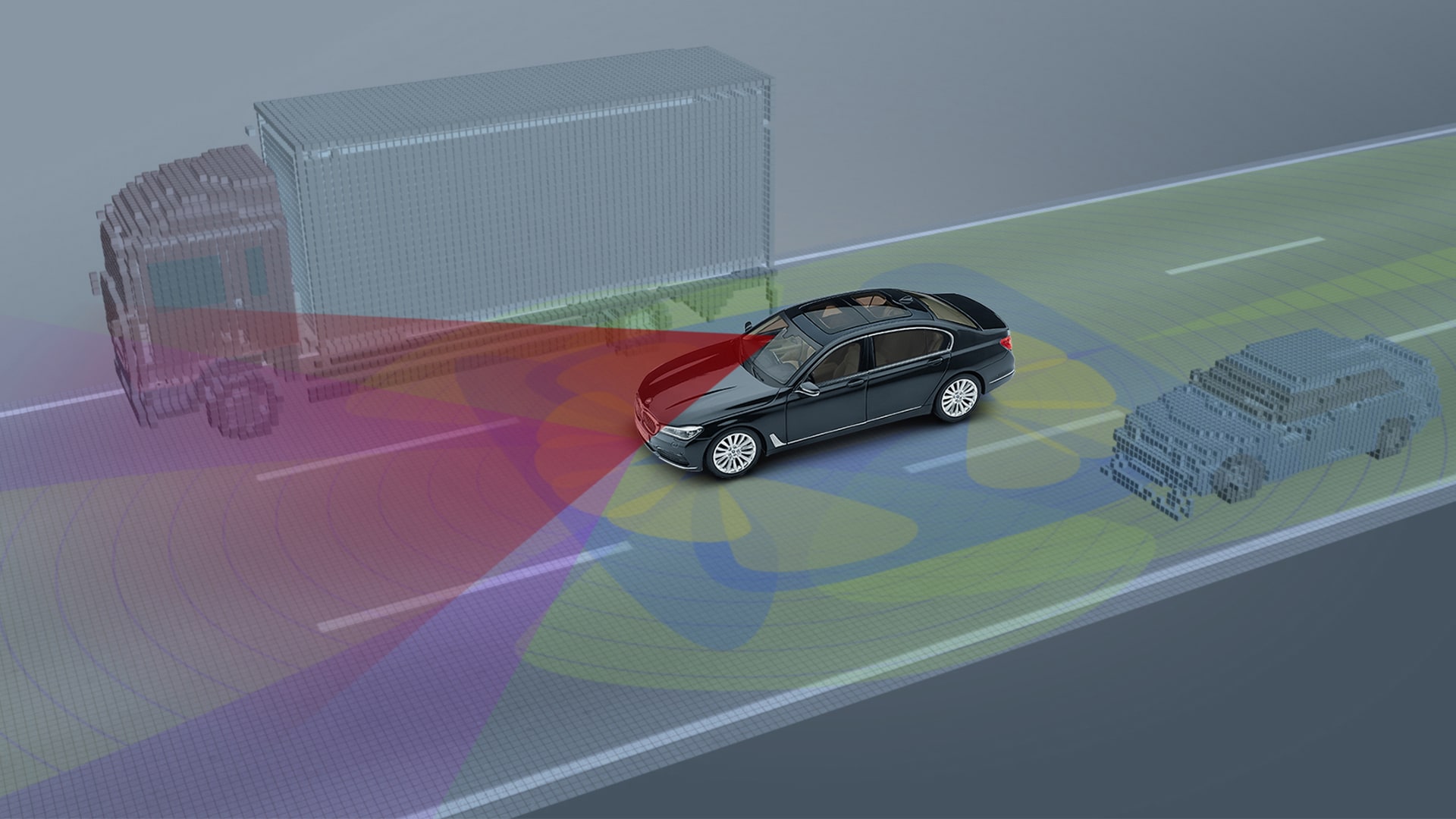
Automotive sensors: assistance systems' sense organs
6 April 2021
Always stay up to date
Innovative mobility, exciting trends for the future and high RPMs: Subscribe now to get notified of new content.
Subscription successful .
Subscription failed . If you need help follow the link for support.
HOW DOES THIS SOUND?
You can also listen to this article via Changing Lanes, the official BMW podcast.
Apart from this and other narrated articles, Changing Lanes offers you fresh new episodes every week, packed with exclusive insights on tech, lifestyle, design, cars, and more – brought to you by hosts Nicki and Jonathan.
Find and subscribe to Changing Lanes on all major podcasting platforms.
- Connectivity
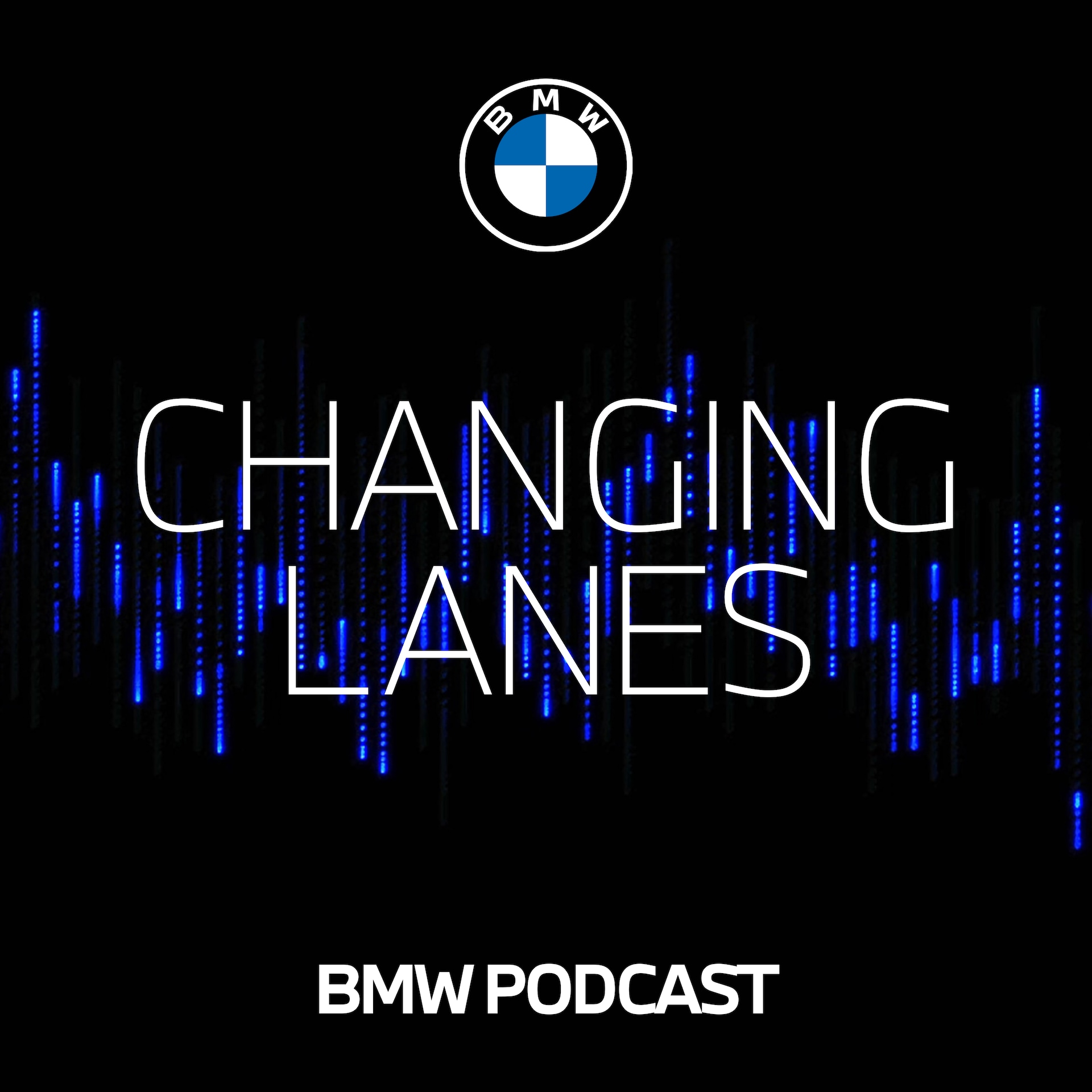
Each type of car sensor has its advantages. Together they complement each other perfectly.

Development Engineer for Autonomous Driving Sensor Setups, BMW Group
Your car houses numerous automotive sensors – but they’re hidden as much as possible. Car sensors work unnoticed, making driving more comfortable, more efficient, and safer (➜ Read more: 6 safe driving tips ). Read on as, with the help of BMW expert Felix Modes, we explain everything you need to know about car sensors and what role they play for automated driving and parking functions (➜ Read more: Overview of the main driver assistance systems ), as well as for future autonomous cars.
No sensors, no car
Vehicles are equipped with complex technology for assistance systems. This includes numerous different types of sensor technology installed in various places and with different functions in the car. In addition to rain sensors, light sensors and similar comfort and safety functions, BMW R&D (research and development) and the R&D teams of other automakers and their partners are by and large working towards one goal: highly automated driving (➜ Read more: The value of time and autonomous driving ).

What types of car sensors are installed?
In the assistance systems, sensor technology measures and evaluates what is happening in the immediate and extended surroundings of the car and detects any changes. Sensors are already employed in emergency braking assistants, night vision aids, traffic sign recognition, and of course in anti-lock braking systems (ABS) and dynamic stability control (DSC). In addition, certain BMW models have cruise control with braking, rear drive assist, an attention assistant, or a system that automatically detects necessary lane changes through active navigation. With the aid of BMW expert Felix Modes, we present in detail four types of automotive sensors and their functions: ultrasonic, cameras, automotive radar and lidar (also known as 3D laser scanners). Only when they are all working together do their strengths really come into their own.
Ultrasonic: robust and precise
Let’s start with ultrasonic. This piece of engineering technology is primarily used for parking functions, specifically reversing assistants, parking distance control and automated parking functions. Modes explains that this technology enables “very precise distance measurement over a short range.” Ultrasonic works by sending out pulses of sound and sensing how long these take to be reflected from an object. This robust sensor technology also has no problem operating in fog and darkness, although only at close range, i.e. up to around 30 feet (10 meters).
Cameras: high resolution makes them great for classifying things
Various types of camera are used in vehicles. Up to now, the best-known have been those used to make parking easier, such as the rear view camera. They operate with high aperture angles and have the advantage of capturing as large an area as possible (these are known as “fish-eye” cameras). For driving functions, on the other hand, cameras – and their ability to work with different focal lengths, from telephoto to wide-angle – are of great importance. These are located behind the windshield. Among all the different types of automotive sensors, cameras offer the advantage that they operate with a very high resolution and the image processing is able to accurately assess and differentiate between objects. As recognition is based on artificial intelligence (➜ Read more: AI design: AI gets creative ), as Modes explains, “the image processing system must be taught the different types of object.”
Unlike other types of car sensor, camera sensor data can also be used to classify information such as traffic signs or the status of traffic lights. Their use is curtailed by the fact that they can be limited by environmental factors such as darkness and low-lying sun or a dirty lens. Distances and speeds can also only be estimated from the image data collection due to the principle of passive measurement – other types of sensor technology are better at this. All told, the sphere of application of cameras is broad – they can be used to identify the edge of the lane and support driver assistance functions such as lane departure warning and emergency braking functions, which react to vehicles, but also to pedestrians and cyclists.
Automotive radar: rain is no object
Most people associate radar (which stands for radio detection and ranging) with aviation technology. Yet this electromagnetic sensor technology is now also indispensable to automakers, who have been using it for the last 20 years. It’s used to measure speeds and distances. But how does radar technology work? Modes describes it as follows: “Radio waves are emitted, which scan surrounding objects. The echo of an object is analyzed and, if necessary, responded to.” When it comes to radar technology in cars, a distinction must also be made between two types, as BMW’s expert Modes explains. First up, there are short-range radars. They work with high aperture angles and low ranges (up to approx. 330 feet or 100 meters). Radar sensors of this kind are fitted as corner radars in the ends of the bumpers. They are necessary for the lane-change warning, the lane-change assist, and the intersection assistant. Long-range and full-range radar sensors, on the other hand, cover longer distances (up to approx. 820 feet or 250 meters) and provide information required by the emergency braking function and/or the adaptive cruise control (ACC).

This technology makes very precise distance measurements possible, and “influences such as rain or fog have hardly any effect,” explains Modes. Radar technology is less suitable for classifying objects. Depending on the design, there are various limitations in the technology's assessment of whether objects can be driven under or over. For example, imagine the system is faced with deciding if it is looking at the end of a traffic jam or a sign gantry. In such situations, the camera confirms whether emergency braking should be triggered.
Lidar: darkness is no problem
The three types of sensor technology described above can be found in BMW models today. Lidar is the next step. Like radar, lidar is also an acronym. It stands for light detection and ranging. Put simply, the system sends horizontally and vertically diffracted light pulses out into its surroundings. This scanning allows distances to be measured, taking fixed and moving objects into account. “The lidar sensor makes it possible to create a 3D map of the immediate surroundings, known as a ’point cloud’,” explains Modes. The big advantage of lidar is that it doesn’t depend on the ambient light and having to learn objects, as a camera system does. This means that lidar also responds safely to unknown objects. Thanks to its active light emission and very good resolution, lidar technology enables objects to be precisely classified even at night. These automotive sensors are still relatively expensive, but that will change as volumes increase. Lidar technology will be necessary to make the leap from level two of autonomous driving – where the driver monitors assistance systems – to level three, where the driver is able to hand over complete control to the car (➜ Read more: The 5 levels of autonomous driving ).

Prerequisite for highly automated driving
So, as we can see, each of these automotive sensors has its strengths in a given area. Together they can create a perfect overall picture of the area around the vehicle – under any circumstances. And the overlapping of the systems ensures reliability and availability. Thanks to the progress of networking (➜ Read more: The connected car ) and digitalization (➜ Read more: Smart cities ), sensor data will become increasingly important. This means that automotive sensors are a crucial building block on the way to highly automated driving and eventually autonomous cars (➜ Read more: The development of self-driving cars ). All of this technology is subordinated to one goal: the car of the future (➜ Read more: The car of the future ) must get people to their destination safely.
Photos: BMW; Author: Nils Arnold; Illustrations: Madita O’Sullivan; Video: BMW
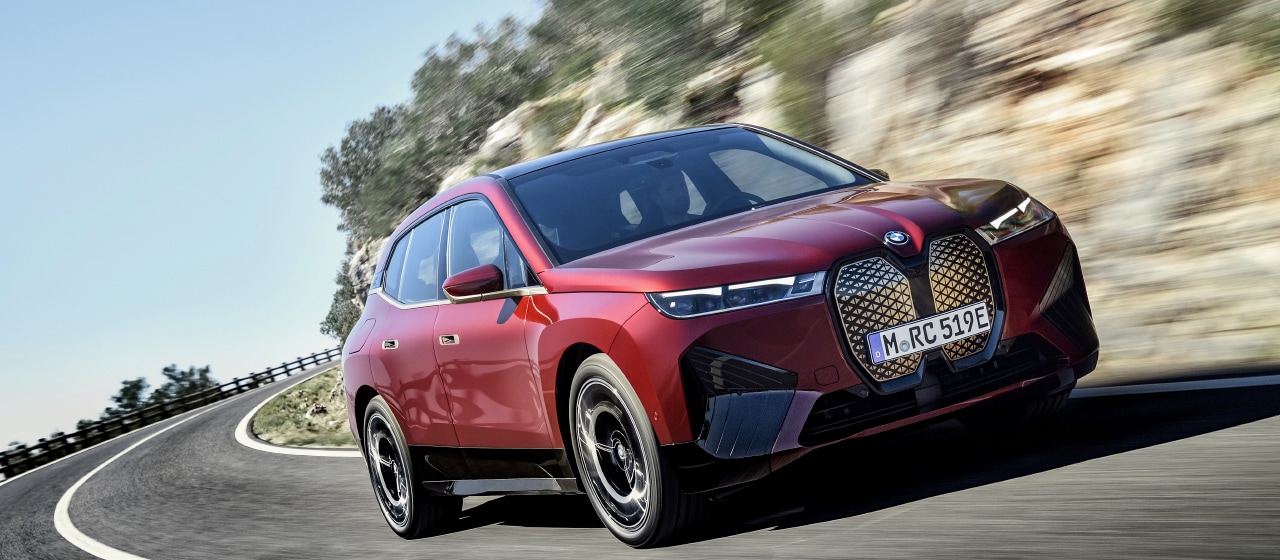
Official data on fuel consumption, CO2 emissions, electric consumption and electric range were determined in accordance with the mandatory measurement procedure and comply with Regulation (EU) 715/2007 valid at the time of type approval. In case of a range, figures in the WLTP take into account any optional equipment. For vehicles type-approved after 01.01.2021 only WLTP values officially exist. For more information on the WLTP measurement procedures, see https://www.bmw.co.uk/en/topics/discover/efficientdynamics/bmw-emissions.html .
For more information on the official fuel consumption and official specific CO2 emissions of new passenger cars, see the 'Guide to Fuel Consumption, CO2 Emissions, and Electricity Consumption of New Passenger Cars', which is available free of charge at all sales outlets, from Deutsche Automobil Treuhand GmbH (DAT), Hellmuth-Hirth-Str. 1, 73760 Ostfildern-Scharnhausen, and at https://www.dat.de/co2/ .
More articles
Your complete guide to bmw remote software upgrades.
How BMW composes the score for electric driving pleasure
Attention petrolheads: these are your must-have car apps
Our tool for managing your consent to our use of cookies is temporarily offline. For this reason, some functions that require your consent to the use of cookies may not be available.

Everything to Know About The BMW Dynamic Cruise Control
Cruise controls were once reserved for only selected models of BMW. Less fortunate drivers had to keep their tired eyes and limbs fixed on the road and the pedals for long hours. These fatigued drivers were the cause of many accidents. So, automakers, like BMW and Toyota, started adding the feature to more of their cars.
The BMW dynamic cruise control is an improvement over the traditional system. Traditional cruise control can only do so much as keep your vehicle going at a preset speed. Meanwhile, the dynamic version can detect other vehicles in front of you and road curves and react accordingly.
Most drivers are familiar with the traditional version of cruise control. The dynamic one might seem somewhat confusing to them. The following discussion will hopefully clear things up.
- 1.1 Difference With Conventional Cruise Control
- 1.2 How It Works?
- 2 How do I know if my BMW has dynamic cruise control?
- 3.1 Step 1: Turning On the Control
- 3.2 Step 2: Set Your Speed
- 3.3 Step 3: Distance Setting
- 3.4 Step 4: Speed Increments
- 3.5 Step 5: Cancel and Resume
- 4.1 How do I change from regular cruise control to dynamic cruise control?
- 4.2 How much does dynamic cruise control cost?
- 4.3 Does adaptive cruise control apply brakes?
- 4.4 Can you add adaptive cruise control after purchase?
- 5 Conclusion
What is BMW Dynamic Cruise Control?
In conventional cruise control , you set the vehicle to a certain speed. Your car will then automatically accelerate up to that speed and maintain it. The benefit is that the foot you keep on the gas pedal can get some rest. Also, as the car maintains the preset speed, it can save you from speeding tickets.
Difference With Conventional Cruise Control
However, conventional cruise control doesn’t have the necessary technology to adjust your car according to upcoming obstacles. So, you must still watch out for another vehicle appearing or the road curving abruptly.
This is where Dynamic cruise control offers an improvement. Besides setting a speed, you can also set the following distance on your BMW cruise control.
When you are speeding across an open highway, the car will normally continue at its set speed. But your BMW will automatically slow down as soon as another vehicle or obstacle appears. When the obstacle moves away, your car will accelerate on its own and reach the preset speed again.
How It Works?
Three components work in concert to make dynamic cruise control possible. Firstly, there is the radar system. Your dynamic cruise control will shoot radar waves from the car. These waves reflect off the object in front of the vehicle and return to the car.
Secondly, there is the sensor system. This system can receive the radar signals that come back from the objects and make necessary adjustments. There are two kinds of sensors in dynamic cruise control- Speed sensors and Distance Sensors.
The Distance sensors keep track of the gap between your car and an upcoming obstacle based on the signals it receives. Meanwhile, speed sensors decelerate your vehicle when the gap is shorter than the following distance. Similarly, it will adjust to a faster speed when the path clears up.
The third component is the longitudinal controller. It is kind of like a computer that collects information from the radar and sensor systems. In light of that information, it sends appropriate command signals to the engine to slow down or accelerate the car.
Read Also>> BMW 2002 vs BMW 1600: What’s The Difference?
Read Also>> Why BMW Battery Discharged While Stopped? (Cause & Fix)
How do I know if my BMW has dynamic cruise control?
Almost all the newer BMW models have dynamic cruise controls. Examining the steering wheel is the simplest way to tell if your car has cruise control.
Cars with dynamic cruise control will have 5-6 buttons on the left panel of the steering wheel. Depending on the specific BMW model the number and orientation of this switch might vary.
Here’s a table with all the BMW models that have dynamic cruise control-
How To Use The BMW Dynamic Cruise Control?
Renowned automakers like BMW are always trying to improve their vehicles in the next model. Therefore, slight differences in the cruise control panel on your steering wheel might exist.
However, almost all the systems have some things in common. For instance, you will always find the dynamic cruise control panel on the left side of the steering wheel. There are also various other similarities, based on which you can follow the steps below to operate the cruise control-
Step 1: Turning On the Control
You can turn on your cruise control by pressing the assisted drive button. You can identify it from the car-and-gauge drawing on it. You will notice a green sign (cruise control gauge) on the digital cluster when the system turns on.
Step 2: Set Your Speed
Next, you will set your speed and the following distance. The ‘Set’ button allows you to determine your constant speed. Dynamic cruise controls also have a speed limit assistant. You can use it to ensure the car is within your desired speed at all zones.
Step 3: Distance Setting
The digital cluster will show several lines indicating distance. Each line refers to one car length. You can use the distance buttons to reduce or increase the number of this line. The distance buttons are marked with plus and minus signs and function accordingly.
Suppose you set the following distance to two lines. In that case, your car will decelerate when you are two car lengths away from an obstacle. Whenever an obstacle appears ahead, the instrument cluster will show a sign which looks like a car.
Step 4: Speed Increments
Nesting between the distance control button is the rocker switch. It is smaller and also has plus and minus markings. It almost feels like a volume up and down button on audio devices. You can use this switch to increase the set speed. BMW allows speed increments of one and five mph.
Step 5: Cancel and Resume
You can press the cancel button to turn off the dynamic cruise control in your car. The same happens when you hit the brakes. Press the resume button to return to the assisted driving mode at your preferred set speed and following distance.
Read Also>> BMW Timing Chain Replacement Cost & Guide (Explained)
Read Also>> BMW X5 Tire Pressure | How To Check The Recommended Psi?
After the above discussion, Dynamic Cruise Control might not seem confusing. But we are happy to answer any more questions you might have.
How do I change from regular cruise control to dynamic cruise control?
If your car has both controls, you can press the Cancel button for several seconds. This will switch between modes. Also, the main difference between regular and dynamic is in distance control. So, as soon as you activate the distance button, you enter the dynamic mode.
How much does dynamic cruise control cost?
The dynamic cruise controls with top-notch technology and capabilities will cost around 2000-2500 dollars. However, you can get more basic and less capable systems at around 500 dollars (equipment plus labor costs).
Does adaptive cruise control apply brakes?
The distance and speed control features allow the adaptive cruise control to apply some amount of braking. It usually does this when encountering a traffic jam or a non-moving obstacle.
Can you add adaptive cruise control after purchase?
You can buy adaptive cruise control kits and add them to your car. However, your BMW must fulfill the design and technological requirements for the addition of this kit. Kits range from 250$ to 4000$ in price, and you will need automotive experts for the installation job.
Read Also>> How To Fix Chassis Stabilization BMW? (Full Guide)
Conclusion
The BMW dynamic cruise control makes the road safer for everyone. It also reduces fatigue and stress on long road trips. So, if your car doesn’t have one, it’s worth spending thousands of dollars on installation. However, the recommended action is to buy a car with dynamic cruise control, to begin with.
Turn off cruise control on busy local streets. These roads are unpredictable; another vehicle or person can come before your car at any time. Driving at a preset speed in this scenario is dangerous.
Plus, knowing that you are in assisted driving mode will make you relax and reduce your mental alertness. So, reserve cruise control only for the highways.
What Happens If You Accidentally Put Regular Gas in a BMW?
What Happens If You Accidentally Put Regular Gas in a BMW?BMW needs everything premium to run in…
Why BMW X5 Driver Seat Won’t Move? Try These Solutions!
One of BMW’s most popular SUVs sold globally is the midsize luxury SUV known as the BMW…
![radar cruise control bmw 4 Bad BMW Intelligent Battery Sensor Symptoms [Explained]](https://luxurycarzip.com/wp-content/uploads/2023/03/Bad-BMW-Intelligent-Battery-Sensor-Symptoms-768x461.png)
4 Bad BMW Intelligent Battery Sensor Symptoms [Explained]
Some common symptoms of the BMW intelligent battery sensor going bad are To fix this problem, diagnose…
How To Bypass BMW Battery Safety Terminal? Explained!
The BMW battery safety terminal is important in any model but can often confuse drivers. It’s important…
How To Fix Bmw Interior Peeling? Easy And Quick Methods
After using BMW for three to four years, the interior panels sometimes peel for various reasons. Regardless,…
Can I put 89 gas in my BMW? Find Out Now
If you’re the proud owner of a BMW, you may wonder if 89 gas is the right…

- Future Vehicles
- Limited Edition Vehicles
- Concept Vehicles
SEDANS & GRAN COUPES
CONVERTIBLES

All-Electric
Plug-in Hybrids
X5 xDrive50e
750e xdrive.
- BMW Charging
- All-Electric Vehicles
- Plug-in Hybrid Vehicles

THE MOST POWERFUL LETTER IN THE WORLD
Convertible
Additional M Models
Coupe Models
M235i xDrive
Sedan Models
M440i xDrive
Convertible Models
M850i xDrive
Explore local inventory.
Invalid ZIP Code
SHOPPING TOOLS
- Find Your Trade-In Value
- Estimate Payment
- Request a Test Drive
- Shop BMW Parts & Accessories
- Shop Online
OFFERS & FINANCING
- Lease & Financing Offers
- BMW Certified Offers
- Apply for Financing
- BMW Financial Services
- Sign in to My BMW
- Register for My BMW
- Log in to BMW ConnectedDrive
GET TO KNOW YOUR BMW
- BMW Financial Services My Account
- Make a Payment
- The BMW Card
- Owner's Manual
- BMW ConnectedDrive
- Remote Sofware Upgrades
- BMW Parts & Accessories
CARING FOR YOUR BMW
- BMW Maintenance Programs
- BMW Service
- Warranty Information
- Safety and Emission Recalls
- Protection Products
- BMW Vehicle Return
You can try a new search, or visit the location below.
To find a BMW Center, try a new search or visit one of the locations by expanding the list results below
BMW Driver Assistance
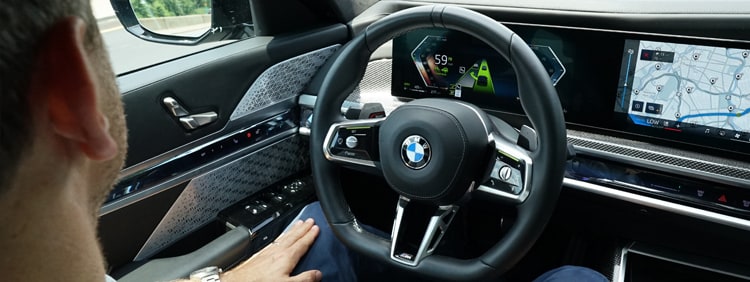
ALL ABOUT BMW DRIVER ASSISTANCE
Learn about bmw’s intelligent driver assistance systems and features..
Your BMW comes equipped with driver assistance systems, transforming the comfort, safety, and convenience of every drive. These systems utilize sensors to gather data on speed limits, vehicle proximity, lane markings, and more. They also incorporate GPS and navigation data to provide warnings through audio or visual alerts when potentially hazardous situations arise.
Advanced driver assistance systems go beyond warnings and actively intervene when necessary or preferred. They can apply brakes, adjust acceleration, or execute steering maneuvers to prevent accidents or ease your workload, especially in challenging driving conditions. Additionally, these systems assist with tasks like maneuvering and parking. While they provide valuable support to the driver, it’s important to note that the driver remains responsible for the act of driving.

DRIVER ASSISTANCE
Every drive, transformed, highway assistant, distance control and steering assistant, lane change assistant.
Additional driver assistance features.

PARKING & MANEUVERING
Handle every parking situation with ease, backup assistant, maneuver assistant.

DISCOVER MORE

Build Your Own

ConnectedDrive

Contact a BMW Center

Which BMW Models Have Active Cruise Control?
I’m thinking about getting a BMW sedan, however since I frequently travel via highway, I want to make sure it includes adaptive cruise control. What makes are included as standard?
In less than two minutes, find out if your auto insurance is being overcharged.
Adaptive cruise control is a fantastic feature to have in your BMW, and the following 2021 models come standard with it:
Autonomous cruise control
- BMW 2 Series convertible and coupe
- Gran Coupe, BMW 2 Series
- 4 Series BMW
Hands-on lane centering and adaptive cruise control
Adaptive cruise control, hands-on lane guidance, and hands-free lane guidance only at lower speeds
- 3 Series BMW
- 5 Series BMW
- 7 Series BMW
- 8 Series BMW
Active Cruise Control with Stop & Go is how the BMW adaptive cruise control comes to a stop. Additionally, some versions come equipped with Active Lane Keeping Assist and Extended Traffic Jam Assistant, which enable manual lane-centering steering to stop the car in specific traffic situations.
Regardless of whether your BMW has adaptive cruise control, you must make sure it is adequately covered by insurance. When you browse for auto insurance with Jerry, you may locate the necessary coverage at the lowest cost. Simply download the app, provide some information, and Jerry will search more than 50 insurers to bring you the best offers. Savings with no hassles or paperwork.
In This Article...
Active Cruise Control with Stop & Go is Coming to the BMW X3 and X4 in April
Unexpectedly or not, the facelifted BMW X3 and X4 cars, which were launched late last year, did not come standard with the most recent Active Cruise Control capabilities. This will alter in April when the SUV and Sports Activity Coupe will both be equipped with the most recent Stop & Go technology. One of the most helpful features you can receive in a BMW is the Active Cruise Control functionality, especially for prolonged highway drives. This is due to the fact that it offers several unique features in addition to Adaptive Cruise Control. Unlike the already-standard cruise control with braking function, it also maintains the distance to vehicles ahead, which the driver can decide in four phases, between 30 and 160 km/h (20 and 100 mph).
A radar sensor built into the front bumper is used for distance management, and if necessary, it will cause the automobile to slow down or come to a complete stop. Automatic resumption after brief intermediate stops of up to three seconds is also included in the list of features. Additionally, the technology gives the driver the choice to quickly change their intended speed to one of the speed restrictions registered by the Systems Speed Limit Info traffic sign recognition system.
All of this is a part of the typical Spring model improvements that BMW regularly provides for its vehicles. The Bavarian brand updates its models twice a year in the spring and fall, adding new technology, extra options, and occasionally new paint colors or interior materials. Few surprises were left when the BMW X3 and X4 models, which are relatively new to the market, were presented. Apparently, Active Cruise Control with Stop & Go was one of them, but all will be resolved in April.
The best adaptive cruise control is found in the BMW 3 Series.
Each car’s adaptive cruise control varies a little since different manufacturers offer different features. Speed limit signs, for example, can be detected by the more sophisticated ACC models, which can then modify. This takes us to the BMW 3 Series’ integrated sensory technology and the greatest adaptive cruise control.
The BMW 3 Series analyzes the surroundings outside using cameras, radar, and ultrasonic sensors. For prolonged traffic congestion, the ACC in the 3 Series uses “stop and go” brake technology.
The BMW 3 Series’ ACC, as we previously mentioned, can keep an eye out for traffic signs and decipher what the suggested speed limit is.
The BMW 3 Series additionally includes steering and lane control assistance, as well as a cross-traffic alert, in addition to the “stop and go” braking. The 3 Series is one of the safest vehicles on the road when active side collision avoidance and a lane-keeping aid are included.
With Stop & Go functionality, active cruise control.
Just pick your preferred cruising pace, then unwind: If a slower car moves into the lane in front of you, Active Cruise Control will automatically slow you down until you come to a complete stop.
When stopped for less than three seconds, the BMW 5 Series Sedan moves forward automatically. Longer periods of inactivity require pressing a button on the steering wheel before the car will move off and speed back up to the designated cruise speed.
A 650-foot-range radar sensor continuously gauges the separation between you and the car in front of you and determines which lane the car is in.
There is a lot of video content on the website after this one. This could result in longer loading times for slower internet connections (like those made possible by modems or ISDN).
What ought I to watch out for?
Language used by Audi varies. At speeds up to about 40 mph, Traffic Jam Assist offers hands-on lane-centering steering. Above about 40 mph, Active Lane Assist, which Audi also refers to as lane centering, functions. Search for Adaptive Cruise Control with Stop and Go, also known as Adaptive Cruise Control or Adaptive Cruise Assist, to find adaptive cruise control. Every 2021 Audi model has it, with the exception of the R8 and TT sports cars. The Active Lane Assist feature is also available on the TT, however it is not lane centering. It should be noted that the Audi A3 bypassed the 2021 model year and that the revamped 2022 model year will have lane centering and adaptive cruise control to a stop.
Are there adaptive cruise controls on every BMW?
Despite not being designated as such, Adaptive Cruise Control (ACC) systems are frequently included in contemporary BMW models. Search for the phrases Active Cruise Control and Dynamic Cruise Control instead.
Dynamic Cruise Control is a relatively straightforward improvement over conventional cruise control. It is adept at maintaining a particular speed and deploying the brakes when necessary. This indicates that it doesn’t quite qualify as an ACC system.
On the other hand, Active Cruise Control is an adaptive system in all but name. The ability to select and maintain a distance behind other vehicles is one of many enhancements made to a standard system by the Active Cruise Control supplied by BMW.
Let’s examine some of the factors that make drivers adore adaptive cruise control:
If you intend to purchase a brand-new BMW, your auto insurance costs may be quite high. A few minutes and hundreds of dollars can be saved on your insurance by using Jerry, a comparison software. Jerry customers typically save over $800 a year on their insurance.
Is adaptive cruise control a part of the BMW Active Driving Assistant?
Can anyone confirm (or refute) that the following is a standard feature of the UK’s M50? It is part of the Driving Assistant Professional optional package.
A driver assistance system with cameras and radar called Driving Assistant Professional provides the highest level of comfort and safety while driving in boring or challenging conditions. It contains:
Utilizing radar sensors in the bumper, active cruise control with approach control controls the distance from the car in front. In stop-and-go traffic and traffic jams that have reached a full standstill, it automatically maintains distance and queue pace.
This implies that it is not included in the normal “Driving Assistant” bundle. I find it incomprehensible that the typical M50 (or any i4 for that matter) lacks it.
Are there adaptive cruise controls on the BMW 5 Series?
With 4 levels of closeness to choose from, the Active Cruise Control with Stop&Go feature is functional at speeds between 30 km/h and 210 km/h and aids in maintaining a safe distance from the vehicles ahead. In a risky circumstance, it can bring the 5 Series to a complete stop if necessary.
Can a BMW have adaptive cruise control installed?
I was considering the BMW’s adaptive cruise control option, but I’m not sure if I really need it. If I don’t receive it before I buy the car, can I add it later?
A useful feature is adaptive cruise control, especially if you travel long distances at high speeds. After purchase, you can add adaptive cruise control to your BMW, but it won’t be the same system that comes pre-installed in BMWs. Additional adjustments or alterations to the vehicle’s system might be necessary.
Without factoring in installation, you should expect to pay between $2,000 and $2,500 for the system alone. This is for the best system available, which operates at speeds between 60 mph and a complete stop.
The good news is that most BMWs already feature adaptive cruise control, so you won’t need to worry about purchasing it separately. Leave the function inactive if it’s one you don’t wish to use.
While having adaptive cruise control is helpful when driving for a long distance, you should also make sure you have a reliable insurance policy to keep you covered. You can find the best quotes from more than 55 major insurers in less than 45 seconds with Jerry, the number one auto insurance super app. Simply download the app, provide some information, and Jerry will find you discounts on the ideal coverage.
Could Active Cruise Control be added?
Recently, I tested out the adaptive cruise control feature in a friend’s automobile. My older car doesn’t have the function, which is a shame because I appreciated how it helped me regulate my speed and stay a safe distance from other cars. Is it possible for me to upgrade my car’s adaptive cruise control?
I’m sorry to learn that this fantastic feature is not present in your car. Adaptive cruise control (ACC) can, thankfully, be added to vehicles that do not currently have it.
When installing ACC in your vehicle, keep the following two things in mind:
Whether or not your car was built to accommodate ACC installation will depend on whether you need to install all of the additional needed components or not.
If an automobile already has the necessary installation parts, installing ACC into it will be substantially less expensive than if it doesn’t.
The price of ACC is between $2000 and $2500, not counting any additional parts or labor costs.
ACC is a crucial automotive feature, and you shouldn’t let the price prevent you from being safe. Jerry can help you save money on auto insurance so you have more money for other car amenities.
To find you the greatest deal on vehicle insurance, Jerry will compare the best offers from aggressive brokers in only 45 seconds. Simply download the app, fill out your information, and then relax while the hard work is done for you!
Is adaptive the same as active cruise control?
Adaptive cruise control (ACC) is a sophisticated type of cruise control that enables cars to automatically speed up and slow down to keep up with traffic in front of them.
ACC is sometimes referred to as active cruise control, autonomous cruise control, radar cruise control, and intelligent cruise control. Whatever name it goes by, it’s a feature that’s showing up in more and more new cars.
Which vehicles have lane assist and adaptive cruise control?
- Toyota Camry 2021.
- Toyota C-HR 2021.
- Toyota Corolla 2021.
- Toyota Highlander 2021
- Toyota Mirai for 2021.
- Toyota Prius in 2021.
- Toyota RAV4 in 2021.
- Toyota Sienna 2021
- What's My Car Worth?
- Buyer's Guide
Cars with Adaptive Cruise Control: Everything You Need to Know
Cars with adaptive cruise control used to be considered a luxury only featured in state-of-the-art vehicles. Still, with technological advancements, adaptive cruise control is now a common feature found in many different car models.
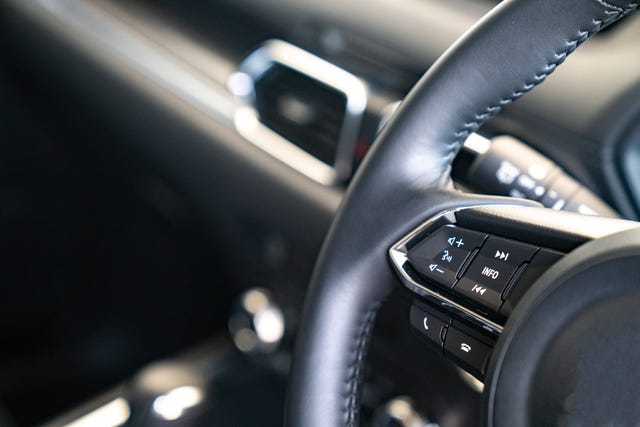
Cars with adaptive cruise control used to be considered a luxury only featured in state-of-the-art vehicles. Still, with technological advancements, adaptive cruise control is now a common feature found in many different car models. Autobytel says this means ACC is now accessible to everyone, and even if your current vehicle doesn't have ACC, you can always have it installed.
What Does Adaptive Cruise Control Do?
Adaptive cruise control uses advanced sensory technology to determine your car's speed in proximity to other vehicles or objects on or around the roadway. It applies moderate brakes and warning signals when a driver is getting to close to another car. Drivers can set the speed limit on the ACC so that they don't exceed the speed limit, but when the sensory technology detects traffic or other unsafe conditions, it reduces the driver's speed to adapt to them.
The Best Cars With Adaptive Cruise Control
1. 2020 bmw 3 series.
This brand new model offers the best combination of sensory technology . It uses cameras in addition to ultrasonic and radar sensors to pull data about the environment surrounding the vehicle. In addition to its sensory features, it also has a "stop-and-go" brake feature, great for commuters who spend extended amounts of time in stand-still traffic as it alleviates the stress on the driver's legs and feet. What's more, the camera sensor can pick up traffic signs such as speed limit signs and reduce or increase speed to match the recommended rate of speed.
2. 2020 Volvo S60
This new model by Volvo has a "Pilot Assist" feature, which makes driving safe and easy. What this feature does is it helps the driver maintain the proper speed with neighboring vehicles, and it also provides steering assistance along with automatic braking or accelerating for situations such as stop-and-go to free-flowing traffic. Another great aspect of this model is that it doesn't rely on a lead car to determine speed and spacing, so you can use it even when you aren't near another car.
3. 2020 Hyundai Sonata
This new Hyundai model has the same technological systems as other Hyundai models, called "SmartSense advanced driving assistance systems." The 2020 Hyundai Sonata includes SmartSense features such as five cameras, three radar sensors, and 12 ultrasonic sensors to help with things such as advanced cruise control, stop-and-go feature, warning signals, and automatic braking or accelerating.
4. 2020 Nissan Altima
The 2020 Nissan Altima features Nissan's "ProPilot Assist" system, which uses advanced technology to help drivers practice safe driving. It allows drivers with automatic acceleration and braking for speed and distance control, while it also uses automatic steering to help them maintain lane control. These helpful features are made possible by its front-facing cameras, sensors, radar, and electronic control module.
5. 2020 Toyota Corolla Hatchback
This new model provides drivers with an adaptive cruise control system, specifically designed for highway travel. Its cruise control features include cameras within the car and radar sensors on the front grille that can gauge your car's proximity and speed when compared to other vehicles around you. Similarly, these sensors help determine the rate of speed of the vehicle in front of you and automatically decrease your speed if the vehicle in front of you slows down.
The Cheapest Cars With Adaptive Cruise Control
According to U.S.News, here are some examples of the cheapest cars you can buy that still have adaptive cruise control features:
1. 2019 Kia Soul
You can get Kia's "smart cruise control" feature as part of their "Primo Package." This add-on is around $4,500 in addition to the original selling-price. You can save energy with its automatic braking system, and also keep a safe following distance thanks to its forward-collision warning feature. In addition to these safety features, the Kia Soul also provides drivers with a heated steering wheel, and in-depth seat adjustments to meet more complex needs for your body type.
2. 2018 Mazda 3
The 2018 Mazda 3 provides drivers with an adaptive cruise control system that detects rear-cross traffic and blind-spot monitoring, great for making safe lane changes. It also offers a "premium equipment package" for just $1,600 in addition to the original selling price. This package gives your vehicle advanced safety features and other add-ons such as a heated steering wheel and a built-in navigation system.
3. 2018 Hyundai Sonata
The 2018 Hyundai Sonata offers buyers the "technology package" for just $1,000. Included in this package are adaptive cruise control to help drivers maintain a safe following distance and adequate speed. This model also comes with a turbocharged four-cylinder engine.
4. 2018 Toyota Rav4
This 2018 Toyota Rav4 SUV includes an adaptive cruise control system for a fee that increases the original selling price to just above $25,000. When you turn your ACC feature on, it uses its radar sensors to administer collision warnings, automatic braking, and acceleration to make sure that your vehicle moves at a safe pace and maintains an appropriate following distance from other vehicles on the roadway at all times.
The 2018 Toyota Rav4's adaptive cruise control system is categorized as "standard equipment" in Toyota's "Safety Sense P suite of technology," Making it a high-tech safety vehicle for a reasonable price point.
5. 2018 Honda Accord
The 2018 Honda Accord features a state-of-the-art adaptive cruise control system called the "Honda Sensing System." This system offers not only adaptive cruise control but also several other useful safety features, including automatic braking for collision prevention and traffic sign recognition.
These features are powered by camera sensing technology that can read traffic signs such as speed limit markers and adjust the Accord's speed to fit those speed requirements. You can get even more safety features by upgrading to higher-trims.
As adaptive cruise control becomes more readily available, you can find cheap and affordable car models that include much of the same technology as modern luxury cars.
https://www.autobytel.com/car-buying-guides/features/10-cars-with-adaptive-cruise-control-131148/
https://cars.usnews.com/cars-trucks/cheapest-cars-with-adaptive-cruise-control
https://www.caranddriver.com/bmw
https://www.caranddriver.com/shopping-advice/
.css-1updq97:before{background-color:#000000;color:#fff;left:0;width:50%;border:0 solid transparent;bottom:48%;height:0.125rem;content:'';position:absolute;z-index:-2000000;} Research .css-1e2ieb7:after{background-color:#000000;color:#fff;right:0;width:50%;border:0 solid transparent;bottom:48%;height:0.125rem;content:'';position:absolute;z-index:-2000000;}

Tundra vs. Tacoma: Comparing Toyota Pickup Trucks

Honda HR-V vs. CR-V: Examining the Differences
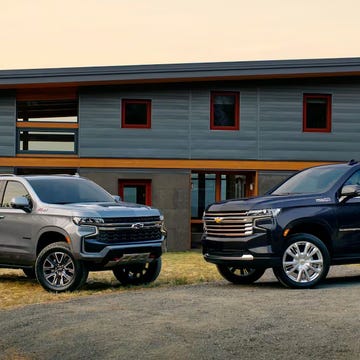
Chevy Tahoe vs. Suburban: Here Are the Differences
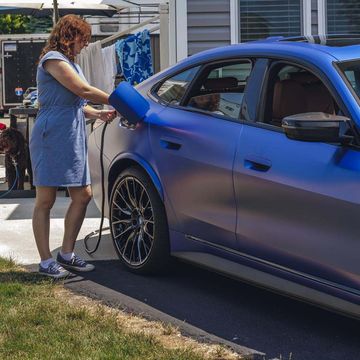
What Are the Different EV Charging Levels?
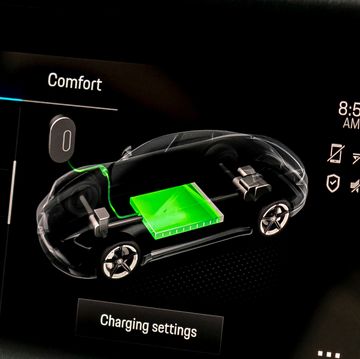
Electric Car Battery Life
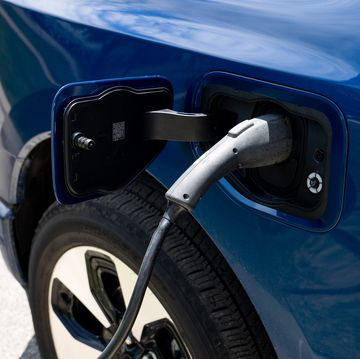
Electric Cars vs. Gas Cars: Pros and Cons

How to Clean Leather Car Seats
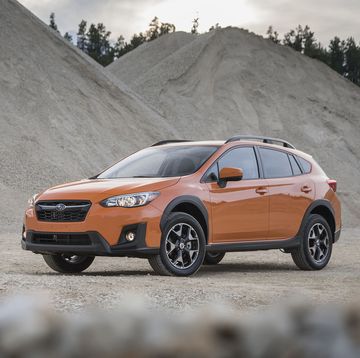
What to Buy: Subaru Crosstrek or Subaru Forester?

What to Buy: Jeep Cherokee or Jeep Grand Cherokee?
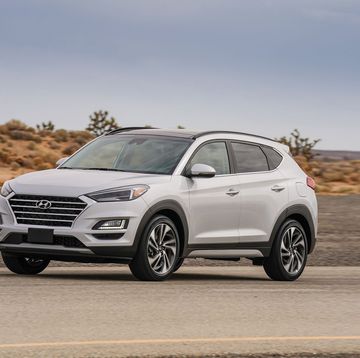
What to Buy: Hyundai Tucson or Hyundai Santa Fe?
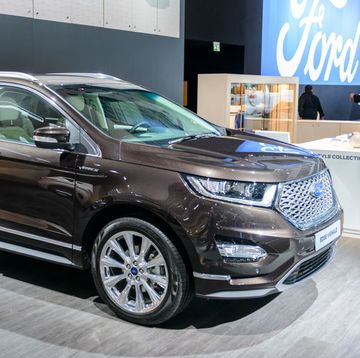
2019 and 2020 Ford Edge Colors
Active Cruise Control
The new Active Cruise Control (ACC) rider assistance system delivers maximum convenience when riding your motorcycle: Using the electronic cruise control system with its integrated proximity controls, you can set your desired riding speed as well as the distance to vehicles in front of you. A radar sensor on the front of the motorcycle determines the distance to preceding vehicles using the yaw rate and vehicle speed. If this distance shrinks, the system automatically reduces your speed and reinstates the desired distance to preceding vehicles. This lets you focus completely on enjoying your ride, making even the longest tours relaxed.
Three control features for the ride
The new ACC has three control features. Dynamic Cruise Control (DCC) regulates the riding speed set by the rider. Active Cruise Control (ACC) regulates the selected speed in consideration of the distance to preceding vehicles set by the rider. If necessary, the curve control feature of the ACC will automatically reduce your speed, enabling you to hit the curve at a comfortable lean angle. As the lean angle increases, the braking and acceleration dynamics are limited. This helps you to ride in a stable manner.
The ACC gives you full control: As a rider, you are always in control and have the option of making changes at any time.
Easy to configure
Riders can set the speed and distance to the vehicle ahead with the press of a button on the handlebar. The distance can be set to three levels, while the speed can be configured between 19 mph and 99 mph. Individual settings are visible on the TFT display.
The two control features "comfortable" and "dynamic" help ensure a more balanced or dynamic acceleration and deceleration.
The distance control feature can be switched off so that you can also use the Dynamic Cruise Control (DCC) system on its own. This system regulates your desired speed in a range from 9 to 137 mph.
Even more technology in detail
Shop Online
- New Car Locator
- Used Car Locator
- New Car Offers
- Sell Back Your BMW
- ConnectedDrive Store
- Aftersales & Accessories Shop
- Approved Used Electric Offer

Find new cars that are immediately available at your local BMW partner and buy or lease them directly online
- BMW Finance Options
- BMW Select (PCP)
- BMW Hire Purchase
- BMW Personal Contract Hire
- Business Contract Hire
- BMW Insurance
- Existing Customers
- Motability Car Scheme

Electromobility
- Plug-in Hybrid
- BMW Neue Klasse: Overview
Service & Workshop
- BMW Accident Support
- BMW Warranties
- Genuine BMW Parts
- BMW Recall Information
- BMW Roadside Assistance
Technology & Innovation
- BMW EfficientDynamics
- BMW Individual
Parts & Accessories
- Accessory Packs
- BMW Lifestyle
- M Performance Parts
- Wheels & Tyres
- Accessories Configurator
- Genuine BMW Accessories
Digital Services & Apps
- BMW Driver's Guide
- BMW ConnectedDrive
- Remote Software Upgrade
Business & Corporate
- Company Car Drivers
- Fleet Managers
- Smaller Businesses
- Specialist Sales
- BMW Chauffeur Guide
- Corporate Sustainability
- Corporate Certified
Brand & Company
- Discover BMW
Sustainability
- Vehicles, Materials & Production
- Circularity
- Social & Governance
User Manuals & Support
- BMW Owner's Guide
- Online Genius
Warranty & Recall
Culture & sports.
- BMW Experiences
- BMW Motorsport
BMW Special sales
- BMW Specialist sales
- BMW Protection Vehicles
- BMW Diplomatic Sales
- BMW Hotel Shuttle Sales
- Contact Specialist Sales
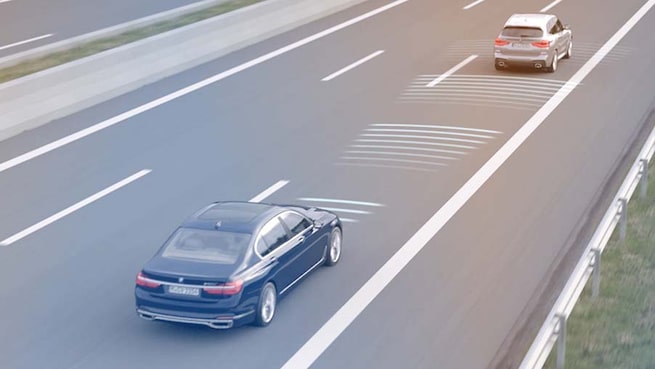
Active Cruise Control with Stop&Go Feature
What active cuise control with stop&go feature can do..
- take away the stress of stop-and-go traffic and long journeys
- the brakes are applied to prevent collisions
- a more uniform speed means less consumption
BOOK AND ACTIVATE ACTIVE CRUISE CONTROL WITH STOP&GO FEATURE.
Activation instructions:.
- Once you’ve logged in, the BMW ConnectedDrive Store will automatically list all the available digital services for your BMW.
- Add Active Cruise Control with Stop&Go to your shopping basket. Enter your payment details and confirm your purchase. When you’ve finished, you’ll receive confirmation via email.
- The next time you drive your vehicle for 15 minutes or more, Active Cruise Control with Stop&Go will be ready for activation in your BMW. You’ll need a stable internet connection with adequate reception.
- If Active Cruise Control with Stop&Go is ready at the end of your drive, you'll see a message on the display of your BMW prompting you to activate it. Confirming this prompt will launch activation.
- Have you still not received a message after three days despite making longer trips, or did the activation fail? Then get in touch with BMW ConnectedDrive Customer Support right away.

- BikeInsurance
- BikeSocial Membership
- Online Service Centre
- About your Policy
- Visit MyAccount
- Get a Quote
- Making a claim
- No Claims Discount
- Policy Documents
- Biking Tips Biking Tips
- Bennetts BSB Bennetts BSB
- Why Bennetts?
- What is included?
- Defaqto Rating
- Additional Cover Options
- How to SORN a motorbike
- Young Rider Bike Insurance
- Classic Motorbike Insurance
- Multi Bike Insurance
- Custom & Modified Bike Insurance
- Comprehensive motorbike insurance
- SERV Blood Bikers
- Third Party Fire and Theft
- Third Party Only Bike Insurance
- Latest News
- 50cc & 125cc Insurance
- How to be a Happy Commuter
- Advantages of Commuting
- Lambretta Scooter Insurance
- Peugeot Scooter Insurance
- Piaggio Moped Insurance
- Vespa Moped Insurance
- Bike Manufacturers
- Car Insurance Car Insurance
- Group Products Group Products
- Motorcycle News
- Racing News
- Motorcycling Advice
- Motorcycle Blogs
- Motorcycle Reviews
- Product Reviews
- Classic Bike Buying Advice
- Motorcycle Events Motorcycle Events
- BikeSocial Authors
- BikeSocial Contributors
- News and Views
BMW radar cruise control coming soon

LinkedIn Profile.
Writing about bikes for 20 years. Published in dozens of titles on five continents. Mildly obsessed with discovering how things work.
- What’s going on in UK motorcycling: Spring 2024
- Best Biking Deals of the Week
- Bennetts confirms 2023 Rider Confidence training days
- News Archive
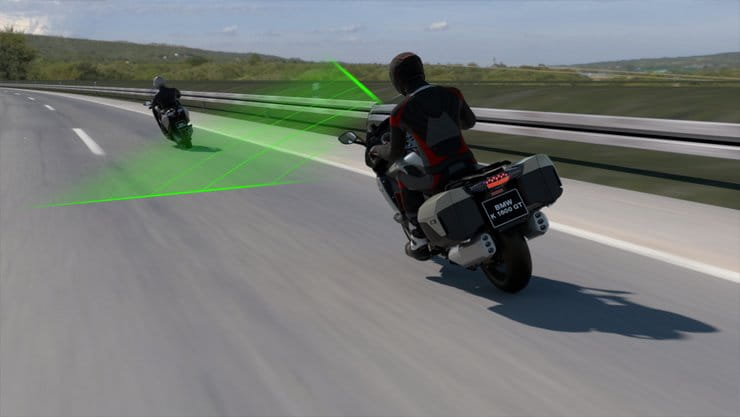
BMW has confirmed that it is joining the rush to radar-assisted adaptive cruise control systems by partnering with market leader Bosch to develop the technology.
The firm is the latest in a host of bike companies to announce the tech, but at the moment we’ve yet to see a single production model launched with radar cruise control. Ducati and KTM are both expected to reveal their first radar-assisted models later this year, with the upcoming Multistrada V4 and the completely redesigned 1290 Super Adventure both adopting the Bosch setup. Kawasaki has also announced a partnership with Bosch to use the system, and while BMW has only just made its decision public, the firm’s bikes have been seen testing with Bosch radars for several months, with the bagger version of the new R18 cruiser expected to be offered with the kit, along with the K1600GT.
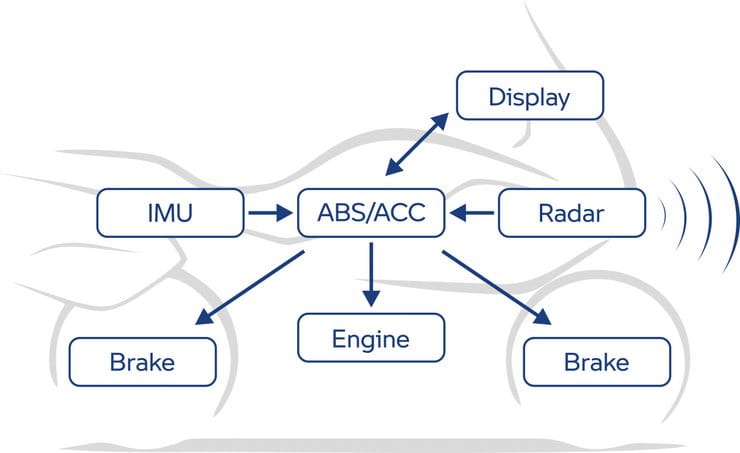
So, how does it work? Well, radar cruise control isn’t a totally new idea. Cars have been offered with it for at least a decade now, and the Bosch bike system uses the same front radar sensor that many car makers have already adopted.
The radar emits radio waves and ‘listens’ for them as they bounce back off objects in front. By measuring the time it takes for the waves to bounce back, and the direction they’re coming from, it can effectively ‘see’ if there’s something in the way and work out how far away it is and how quickly you’re approaching it.
BMW’s fitted with the system, which the firm is calling ‘Active Cruise Control’ or ‘ACC’, will also have the company’s normal, non-radar cruise control – which is confusingly titled ‘Dynamic Cruise Control’ (DCC). That means you can switch between the systems.
ACC is intended to be particularly useful in flowing traffic, for instance on a motorway or dual carriageway. It can ‘lock on’ to the vehicle in front and, by modulating your bike’s throttle and brakes, keep a constant distance. The system’s acceleration and braking is limited to make sure you’re not surprised by sudden reactions, and if it can’t brake hard enough under those limits to keep to the pre-determined safe distance, it will alert you to intervene via displays on the dash. You can also select the aggressiveness of the system’s acceleration and braking, choosing between ‘comfortable’ and ‘dynamic’ modes.
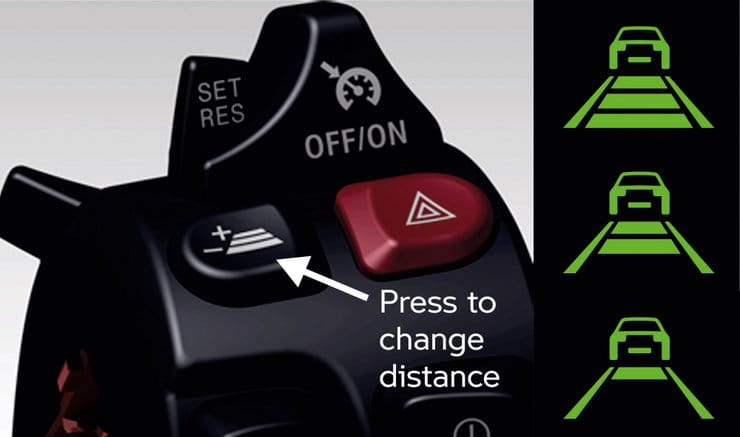
While car versions can sometimes be used to instigate emergency stops that would be potentially dangerous on two wheels, so the rider is expected to take over in an emergency. The radar is also programmed to ignore stationary objects, so it won’t accidentally lock onto something like a parked vehicle, but that means it also can’t react to stationary traffic ahead – so if there’s a traffic jam in front, you’ll need to disengage it and apply the brakes yourself.
As with normal cruise control, touching the brakes automatically disengages the system, as does winding the throttle forwards beyond the ‘zero’ position. Increasing the throttle overrides the pre-set acceleration level without disengaging the ACC if you need to get up to speed more quickly. Applying the clutch for more than 1.5 seconds also disengages the ACC, but short clutch movements don’t turn it off, so you can change gear to suit the speed as the adaptive cruise accelerates or slows down.
The distance from the vehicle ahead can be programmed, with three settings, and the ACC also automatically reduces speed if it senses you’re cornering, so the lean angle doesn’t need to go beyond a ‘comfortable’ level (suggested to be around 20 degrees). Braking and acceleration are also limited during cornering to make sure it doesn’t upset the bike’s dynamics.
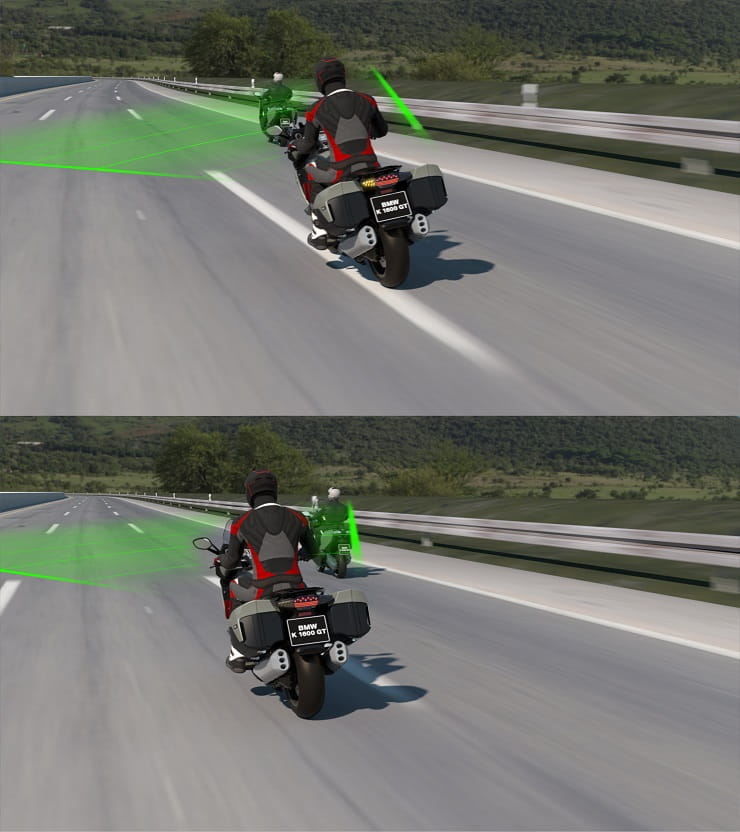
To use the ACC, you simply set it to a target speed, as you would with a normal cruise control. BMW’s active system works between 30km/h to 160km/h, while its passive DCC system – without radar assistance – works between 15km/h to 220km/h.
As with normal cruise control the target speed can be increased or decreased during use at the touch of a bar-mounted button.
If you’re using ACC and the vehicle in front slows too much (below 18km/h), the system automatically disengages and provides a warning to tell the rider he’s back in charge.
Another warning is activated if the vehicle in front brakes harder than the system’s relatively modest automatic braking capability allows, telling the rider he needs to put on the anchors and resume full control of the speed.
The indicators are also wired into the ACC system, telling it that you’re overtaking or changing lanes. When they’re switched on, the radar is set to unlock from the current ‘target’ vehicle more quickly and to lock on to a new one once you’ve completed the overtake or entered the new lane.
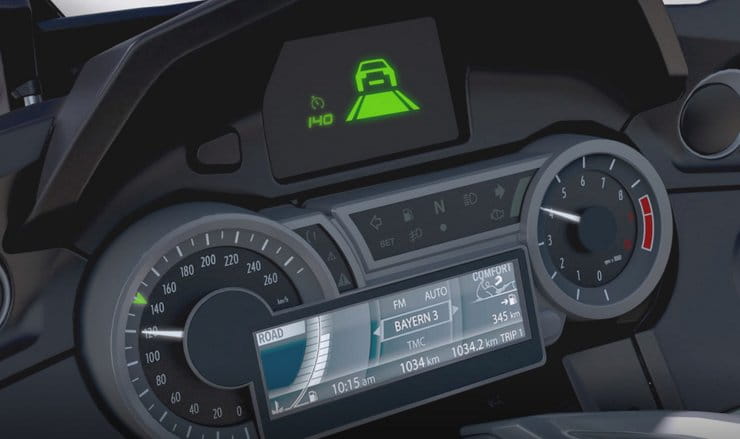
BMW does say that the system has limits, for instance heavy rain, snow or dense fog that could obstruct the radar’s ability to monitor the vehicle ahead. However, Bosch has been developing the bike-mounted radar for several years now, and its rapid adoption by manufacturers suggests it’s a success.
At the moment, BMW doesn’t mention whether it’s going to use the rear-mounted radar sensor that Ducati and KTM are planning to employ as well as the front one. The rear radar is designed to keep an eye on vehicles behind you and warn if they’re either approaching too fast or sitting in your blind spot.
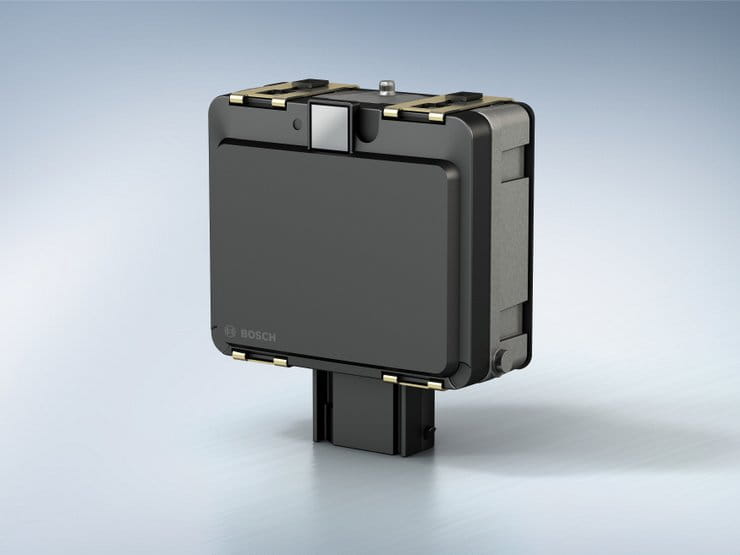
One unanswered question at the moment is one of aesthetics. BMW’s press release and animations showing the system in use don’t show what the radar looks like when it’s fitted to a bike, but spy shots have suggested that it’s a big headache for stylists.
The Bosch ‘MRR Front’ (mid-range radar front) unit measures 70mm across, 60mm high and 30mm deep, and must be mounted with the rectangular front face vertically on the front of the bike with no obstructions ahead of it. There can be a thin, radar-invisible trim panel in front, but it must also be flat and vertical – not a shape that’s easily adopted into the sloping, curved bodywork on the front of most bikes.
KTM’s solution, as seen in spy shots , is to mount the radar in an opening set into the 1290 Super Adventure’s headlight unit. Ducati’s Multistrada V4 has been seen with the rectangular radar sitting uncomfortably between its headlights, and BMW’s R18 , in its as-yet-unlaunched faired form, has a panel above the circular headlight that’s replaced by the radar when the system is fitted (the radar appears to be an optional extra, as the sleeker blanking panel is shown on BMW’s design sketches).
Car makers have an easy job hiding radars in false intakes or behind bumpers, but with much less frontal real estate to play with, bike designers face a much greater challenge. With BMW, Ducati, KTM and Kawasaki all likely to show radar-equipped bikes later this year – and potentially other firms, too, as even Benelli’s upcoming tourer appears to be fitted with some sort of front sensor – it will be interesting to see which company wins the competition to disguise the sensor most successfully.
- New 2020 KTM 1290 Super Adventure spied on test
- BMW R18 and R18 Classic: All the key details
- Scoop: production-spec Benelli 1200 images leaked
- KTM to introduce front and rear sensor technology but “not for next year”
Latest articles from BikeSocial
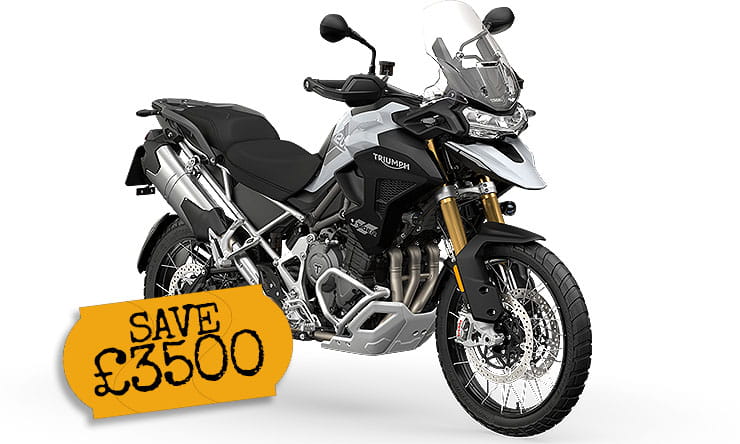
- Account Settings
Classifieds
- Bike Reviews
Product Reviews
- Best Motorcycle Cameras
- Best Motorcycle Earplugs
- Best Motorcycle Oil
- Best Leather Jackets
- Best Winter Gloves
- Best Sportbike Tires
- GPS Buyers Guide
- Adventure Touring
- On-Off-Road
- Sport-Touring
- Touring Scooter
- Harley-Davidson
- Royal Enfield
New Rider's Hub
Top stories.

BMW Releases Details on Active Cruise Control System

BMW released details about its new Active Cruise Control system, its version of Bosch’s Adaptive Cruise Control technology. Whatever the name, the system uses radar sensors to detect objects ahead of a motorcycle and adjusts the cruising speed to maintain a safe distance.
Our own Ryan Adams got a first-hand look at Bosch’s system in 2018, and both KTM and Ducati have announced plans to introduce the technology into their motorcycles as early as the 2021 model year, but BMW is the first to go into detail about how it will work.
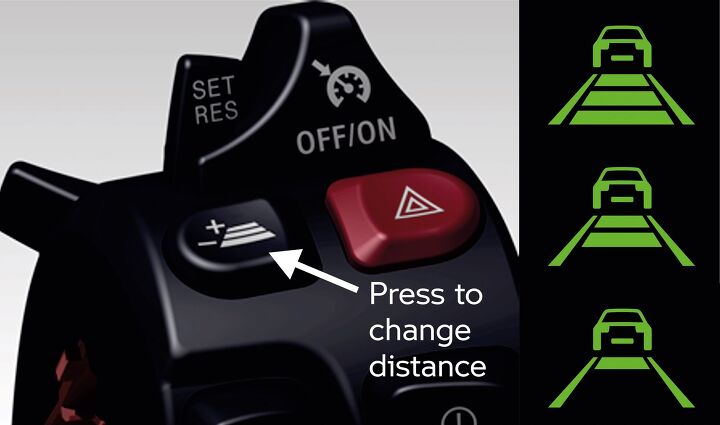
With its active system, riders will be able to set both a cruising speed and a distance ahead of the motorcycle. As long as the area within that range ahead of the motorcycle is clear, the cruise control system will maintain the set speed.
The Set/Res button selects the current riding speed for the cruise control. Pressing it forward again increases it by 1 mph (with a short press) or 5 mph (with a longer press). Holding the button down longer increases the set speed by 5 mph until it is released. Pressing the button to the rear reduces the speed. Pressing the distance button toggles between three settings: short, medium or long.
As with regular cruise control systems, riders can override the speed by twisting the throttle. Cruise control can be turned off by braking or turning the throttle grip forward past its resting position. Applying the clutch interrupts the cruise control for 1.5 seconds. BMW’s system has two modes, comfortable and dynamic, affecting how aggressively the system accelerates or decelerates.

If the radar sensors detect something ahead within that set distance, the cruise control system reduces the speed until it regains the set separation distance. The radar sensor ignores stationary objects and only reacts to moving objects. Riders will still need to be manually in control when, for example, stopping at a traffic light or during traffic jams.

The sensor takes into account the motorcycle’s speed and yaw rate, predicting a path of travel through the next 100 meters to determine whether another vehicle is encroaching in the set distance. A distance controller sends a target acceleration (either positive for acceleration or negative for deceleration) via a CAN bus connection to the ABS and cruise control system. The ABS calculates the amount of drive torque from the engine and braking torque (if required) to adjust the speed.

Active Cruise Control also works when passing another vehicle. Using the turn indicator activates the system’s overtaking assistant function, preparing it to switch from the vehicle being passed to vehicles in the new lane.
BMW says its Active Cruise Control works in corners, but limits the speed to maintain a limited lean angle for comfortable turning (BMW lists 20 degrees as an example). The system will also limit any abrupt braking or acceleration maneuvers.

The radar sensor also serves as a form of collision warning, even if the Active Cruise Control is disabled. A first level warning alerts when a vehicle is detected ahead, signaling that rider intervention is required. A second level warning comes on when the system detects a more dangerous scenario, where the system expects it cannot maintain a safe distance and emergency braking is required. For safety reasons, Active Cruise Control cannot perform emergency braking by itself; riders still have to be ready for emergency measures.
BMW hasn’t outlined when we will see the Active Cruise Control on a production motorcycle, but we’re likely looking at the 2021 model year, coinciding with Ducati and KTM’s adoption of the technology. BMW’s sample images show the system equipped to a K1600GT but we expect it will be available on a wide range of models. There may be some regulatory hurdles to deal with, so it’s unclear if BMW will offer the technology in all markets.

Dennis has been a part of the Motorcycle.com team since 2008, and through his tenure, has developed a firm grasp of industry trends, and a solid sense of what's to come. A bloodhound when it comes to tracking information on new motorcycles, if there's a new model on the horizon, you'll probably hear about it from him first.
More by Dennis Chung
Join the conversation
It's things like this that keep me visiting the following web site; http://progress-is-fine.blo ...
http://disq.us/p/1p01ilm

Find your Motorcycle
Specs classifieds, popular articles.

De-Gassed – How Will You Fuel Your Classic Motorcycle in 2044?

How Much Longer Can Harley-Davidson Support LiveWire? – QotD

2024 Kawasaki Ninja 500 Review – First Ride

World’s Fastest Drone Tracks Motorcycles at Jerez Grand Prix
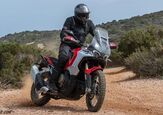
2024 MV Agusta Enduro Veloce Review – First Ride
You may also be interested in.
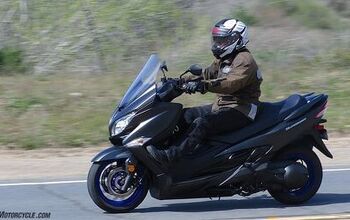
Top 5 Maxi-Scooters

2024 MV Agusta Enduro Veloce – First Look

What Motorcycle Are You Surprised is Still In Production? – QotD

2024 Triumph Tiger 900 Review – First Ride

The Yamaha R1 Is Going Away

Where in the World: Testing the Ducati DesertX Rally in Morocco

2024 Aprilia RS 660 Extrema Review

Unannounced 2024 Indian Roadmaster Elite Already Recalled

Friday Forum Foraging: Kawasaki H2 *Mechanic's Special*

Friday Forum Foraging: One Clean Yamaha FZ-09

Where In The World: A Week In Spain Testing Hypermotards and Dukes

2024 Honda Transalp Review – First Ride

NASCAR Team Trackhouse Enters MotoGP With Aprilia

Ducati Introduces Factory MX Team and Desmo450 MX Prototype

Best Cruiser/Bagger of 2023 Gallery

Best Lightweight / Entry-Level Motorcycle of 2023 Gallery

Friday Forum Foraging: A Sweet Little Monster

A Storm is Coming for the Triumph Rocket 3 R and GT

The Evolution Of Cruise Control And How It Works Today
- Cruise control is a common feature in modern cars, making driving easier and potentially saving money on gas.
- Ralph Teetor, a sightless engineer, created the first cruise control in 1948, influencing the majority of cars today.
- Adaptive cruise control uses radar sensors to maintain a safe distance from vehicles ahead, enhancing safety and convenience.
It is probably instinct for you to be driving along a freeway and clicking on cruise control, giving your foot a rest, and watching the road. You probably don't even think about it now as you cruise along the stretch of road where you usually get to work or to see family regularly.
Or, you could be a driver who doesn't realize that your car features it, but, cruise control is featured in the majority of modern cars, whether that be a new electric car, a frugal hybrid car , a pick-up truck, a sports car, or a powerful sedan . All are likely to boast cruise control, or at the very least, it comes as an optional extra. Cruise control is one of the modern auto world's most useful and convenient features that not only makes your life easier but, also could potentially save you money on gas. Something we all need now that gas prices have recently gone up .
If you are like us and like to know how cars and electric cars work , you have probably thought to yourself before, how does cruise control work? Modern examples of cruise control have come a long way since the original model, and have become a safety measure in cars, so it is now an integral part of driving for a lot of people. For these reasons, we have scoured a wide range of sources to find out where cruise control came from, how it works, what cars feature cruise control, and how it has evolved from the first example, to what it is today.
In order to give you the most up-to-date and accurate information possible, the data used to compile this article was sourced from various Kia's website, Ford's website, and other authoritative sources, including Kelley Blue Book, The Rolls-Royce and Bentley Technical Library, The Smithsonian Magazine, MIT, Car Buzz, JD Power, Department Of Energy.gov, and Fuel Economy.gov.
How Car Engines Work: The Difference Between Gasoline And Diesel Engines
The beginning of cruise control.
The earliest known example of cruise control was created by an engineer named Ralph Teetor in 1948 . Legend has it that the idea came to him after being driven by an acquaintance who would slow down his driving every time he wanted to talk to Ralph. Ralph Teetor was sightless and, according to his family, had a 'legendary sense of touch', so the small deviations in speed would have been noticeable to him.
Others, including his family members, have said that the mandatory gas-saving speed limit of 35 MPH imposed by the American government during WWII could have also been an influence. The increased need for road safety could have played a part. For whatever reason, Ralph Teetor created something that has gone on to influence nearly all the cars on our roads today.
The first example of cruise control was called the Speedostat, and consisted of a dashboard speed selector connected to an engine compartment mechanism. As the driver-set speed got closer, the governor mechanism overcame spring tension to activate a piston capable of pushing back against the gas pedal, making it hard for the driver to push down the gas and gain any more speed until it was deactivated. Teetor obtained a patent for the Speedostat in 1950.
Early Models With Cruise Control
Over the next 5 years after 1950, the Speedostat was improved and a speed lock, which consists of an electro-magnetic motor that allows the driver to reach the needed speed and tap the brakes to maintain the speed, was added.
The first automaker that offered the Speedostat as an optional extra in their luxury models was Chrysler in 1958. The 1950s Chrysler models that feature the early version of cruise control are:
- 1958 Chrysler Imperial
- 1958 Chrysler New Yorker
- 1958 Chrysler Windsor
A couple of years later, Cadillac offered cruise control, as they had re-named it, in all of their models as an optional extra. The earliest Cadillac models to feature cruise control are:
- 1960 Cadillac deVille
- 1960 Cadillac Eldorado
- 1960 Cadillac Coupe deVille
How Cruise Control Has Progressed
Cruise control was not seen as a needed addition to cars until 1973 when an oil embargo against the U.S.A. created the need to save gas wherever possible. Meaning, that the implementation of cruise control became far more widespread and more than just a convenient feature to have. It became a gas-saving device that was needed at the time. Today, cruise control is one of the most common features of modern cars, alongside advanced safety features, which make the roads a safer place .
The change in cruise control comes in the form of throttle control and works in the following steps:
- Speed is selected by the driver via buttons on the steering wheel or dashboard (dependent on the car model).
- An electric motor (part of cruise control which is managed by your car's engine management unit), controls the position of the throttle with assistance from sensors and an actuator.
- The throttle position is set at the angle where the right amount of air can be let into the combustion chamber of the engine and the right amount of fuel can be injected to match your desired speed.
- The throttle is held in that position until you deactivate the cruise control by pressing the brake or accelerator to either increase or decrease your car's speed manually.
- Your car's cruise control may also accelerate or decelerate depending on the road surface and inclination of the road, but this depends on what car you have (we will cover this below).
Volvo Engine Teardown Reveals How Time And Use Affects Precision Components
How cruise control works in modern vehicles.
With more and more cars on our roads than ever before, just setting a speed and leaving at that speed would be great. It would make every journey a lot easier, but, of course, there are other road users to think about. This is how cruise control has become a very handy safety feature as well as a good way of saving fuel, getting a long driving range from your car , and making your trip easier.
In modern cars, radar-controlled cruise control, or adaptive cruise control, is used extensively to ensure you have a convenient ride and your drive is safe. Adaptive cruise control uses the following components to keep you at a safe distance from a vehicle ahead of you:
- Radar sensor
- Digital signal processor
- Longitudinal controller
Like the use of cruise control, an actuator controls the position of your throttle at your desired speed. The main difference between older versions of cruise control and adaptive cruise control is that a radar is placed behind the grille of a car and will help to maintain a safe distance from other vehicles in front of you.
Information is passed from the mentioned adaptive cruise control components to your engine management computer and then to the actuator that controls the throttle and reduces, or increases your speed.
Why Automakers Use Cruise Control
Automakers like Ford have implemented Active Cruise Control in a lot of their cars , and it is an optional extra for a wide range of their models too. Like Ford, many automakers have said that the use of cruise control and adaptive cruise control is being implemented for the following reasons:
- To save fuel
- To provide a safer drive
- To help reduce fatigue and loss of concentration
- To help you stay within speed limits
The Benefits Of Convenience
One of the main things that cruise control or adaptive cruise control is beneficial for in the modern world, apart from safety, is for saving gas. With rising prices pretty much everywhere in everyone's lives, this may be of paramount importance to you.
According to Fuel Economy.gov, the use of cruise control can potentially help you save gas because there will be constant speed of driving upheld. The more you accelerate and decelerate, or change speeds, even unintentionally, the more gas you use. The Department Of Energy has also said that the use of cruise control can help you save gas by maintaining a constant speed on the highway or in low-traffic situations.
Honda VTEC: What It Is And How It Works
Models of modern cars with cruise control.
Most new and some used cars and pickup trucks, depending on the age, and on the auto market come with cruise control or adaptive cruise control as standard. Even if you buy one of 2024's most fuel-economical gas-powered cars , regardless of what engine is featured, it will likely come equipped with either cruise control or adaptive cruise control as standard.
Along with efficient engines that are boasted in mainstream cars , one of the best potential gas-saving features is cruise control. We have taken a look around and found some stand-out examples of pickup trucks and cars that feature cruise control as standard .
Best Trucks And SUVs With Cruise Control
Though pickup trucks are not the most fuel-economical vehicles on our roads, they can be made relatively fuel frugal thanks to their powertrains and features, that help to bring down their combined MPG rating. Of course, the speed you set your pickup truck or SUV at, and how you use cruise control, can affect your combined MPG.
We have written before about the best hybrid cars, trucks, and SUVs for 2024 and 2025 . From our list, the following pick-up trucks and SUVs not only feature some great luxury features, work capabilities, and powerful powertrains, but also feature cruise control or adaptive cruise control:
- 2025 Ford Ranger PHEV
- 2024 Jeep Grand Cherokee 4xe
- 2024 BMW X5 xDrive50e
- 2024 Porsche Cayenne E-Hybrid
- 2024 Kia Niro PHEV
Best Cars With Cruise Control
Featuring in many cars on the market at the moment, cruise control is very common. Adaptive cruise control, as a standard feature though, is a little less common in 2024 budget cars .
If you are looking at buying a new car in 2024 , it is always worth asking, of course, but it is likely that it will feature cruise control as standard. From its humble beginnings in the mid-20th century to the almost required safety and gas-saving device in modern cars, cruise control has had a long history. A history full of adaptations to suit the needs of the driver and the changing road environment. Cruise control has even been rolled out in a few motorbike models as well. It is becoming arguably necessary and common on our roads.
Wanna Know How Brake-By-Wire Works? Here's Your Explanation
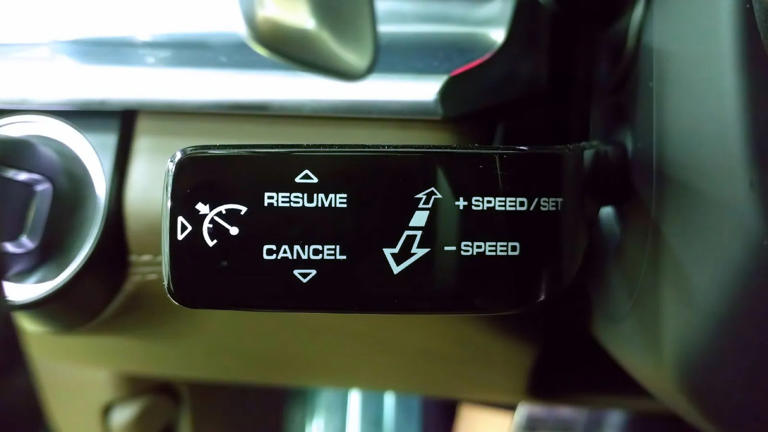

- Forum Listing
- Marketplace
- Advanced Search
- R1200/1250R Discussions
- 2019+ R1250R LC Shift-Cam
R1250R - Active Cruise Control?
- Add to quote

Active Cruise Control
Nope
No, but it has just about everything else.😎
Any other bike has active cruise control? That would mean a bike that brakes for you…
Nicochau said: Any other bike has active cruise control? Click to expand...
I wouldn't want that crap on my bike, but that's just me. I rarely use C/C, but glad it's there when I need to shake the vibes between curves. Or do something with my right hand while cruising. I wouldn't want a bike without cruise anymore, but I probably use it less than a minute total in a day-long ride. I'd never use adaptive cruise. I rarely use it in my 4-wheeled vehicles, and what I absolutely HATE about that feature that I never use, is that it comes by default with the stupid 'emergency braking' turned on, so I have to turn that crap off every single time I remember. It almost caused me to have an accident the other day, when I was forced to pass a stupid trucker (throwing all kinds of crap on my new vehicle) on the right, when he just refused to move over for miles. To avoid freaking him out, I gave him plenty of space, meaning getting close to the truck in front, before cutting in. And that's when my car, all of a sudden, slammed on the brakes momentarily. That freaked the hell out of my wife, and it caught me off guard myself too, since I wasn't that close, and I expected a warning first. I got both actions at the same time. And yes, I forgot to turn it off after fueling up that time. Hopefully the bike just has C/C, without that other 'assistance' crap.
Often when I use cruise control, which I really like and use quite a bit, I think, I wish it could detect the vehicle in front and ease the throttle to save me knocking off the cruise control. Yup it would be cool to have adaptive cruise control – I’d love it. On the other hand whilst I paid over 400 quid for the pleasure of having it on the R1250R (it really should be standard equipment like many other bikes), I certainly wouldn’t pay another 400 quid on top to make it adaptive.
Any other bike has active cruise control? That would mean a bike that brakes for you… Click to expand...
While I didn't opt for the active cruise control on my 2021 RT, the standard cruise control will brake to maintain speed downhill. I have never noticed it happening though - there is so much engine braking it seems an unnecessary addition.
I doubt ACC doesn't control brakes. What if you're following a vehicle at the closest possible follow distance setting and that vehicle suddenly decelerates at a rate high enough that a bike that is just coasting can't keep up with?
ACC does apply the brakes, but for this you can also choose for dynamic or comfort. Also the distance to the vehicle in front of you can be set. It was on my RT when I bought it, and I really like it! Now I’m also using cruise control when there’s much other traffic (and unfortunately that is almost all the time in The Netherlands….)
All adaptive C/C systems have to adjust speed by default. And that means braking by some means. I'd only use such a system (if I was into that, which I'm not) that has no actual use of the brakes, but only engine braking via throttle control (which is plentiful on most bikes). Also keep in mind that such system is only recommended on STRAIGHT roads, so always keep that in mind. If you're approaching a slow-moving vehicle in a curve, the radar is not going to detect it until you're on top of it. And if the system includes the dreaded 'automated emergency braking', better be hanging on. My bottom line on adaptive cruise control on a bike, is if you're riding so close to a vehicle at highway speeds that you expect the bike to reduce speed for you, you're simply riding in an unsafe manner IMO. You never know what can happen. The few seconds I use cruise during rides, mostly to shake vibes, or adjust right cheek pad because my ear is hurting, or something similar, I do it while wide open... and still, it's a risk, since an animal could materialize in front of me. But that's why I like a factory system (vs a throttle lock), since it cuts off immediately upon brake application, not lenghtening the braking distance if your throttle lock is not completely closed before braking. I'd never use it as a cruise on a 'cage' (I hardly ever do that as well), but that's just me.
It’s just like with other support-systems you always have to keep in control yourself. It does not replace the rider, but it is just convenient in many situations. In other situations it is better not to use it. think of it like the shift-assist, if you don’t know how and when to use it, it’s better not to use it at all. I would never had bought ACC myself, but once I got used to it, I like it very much👍😁
- ?
- 143.1K posts
- 11.9K members
Top Contributors this Month
Shooter Files by f.d. walker
Street Photography Tips, Interaction, Travel, Guides
Apr 24 2017
City Street Guides by f.d. walker: A Street Photography Guide to Moscow, Russia

*A series of guides on shooting Street Photography in cities around the world. Find the best spots to shoot, things to capture, street walks, street tips, safety concerns, and more for cities around the world. I have personally researched, explored and shot Street Photography in every city that I create a guide for. So you can be ready to capture the streets as soon as you step outside with your camera!
At over 12 million people, Moscow is the largest city in Russia and second largest in Europe by population ( Istanbul is #1). An urban, cosmopolitan metropolis with more than enough glitz and glam to cater to the elite, but without losing its fair share of Soviet era roughness around the edges. It can be fast paced, brash, busy, and trendy like other big cities, but it has its blend of West meets Russia atmosphere and beauty that provides plenty of unique interest. The Red Square is as famous as it gets, but there’s so much more to this city, including the most beautiful subway system you’ve ever seen. It would take years to capture all of Moscow, but that means you have an endless amount of areas to discover.

So here’s a Street Photography guide so you can be ready to capture all that Moscow has to offer before you even arrive!
- Patriarch’s Pond
- Old Arbat Street
- Maroseyka Street
- Tverskoy Boulevard
Top 5 Street Spots:
1. red square.
The Red Square is the most famous square in not just Russia, but all of Eastern Europe. The name actually doesn’t come from the color of the bricks or communism, but from the name in Russian, Krásnaya, once meaning “beautiful” before its meaning changed to “red.” This large plaza is what you see on the cover of guide books and magazines for Moscow, with St. Basil’s Cathedral being the center piece next to Lenin’s Mausoleum surrounded by the Kremlin Wall. Of course, the Red Square attracts hordes of tourist due to the main attractions, but all that activity around an interesting atmosphere does provide street photo opportunities. It’s also the central square connecting to the city’s major streets, providing a good starting point to explore outward.

You’ll also find the popular pedestrian only Nikolskaya Street connecting the Red Square to Lubyanka Square. This line of expensive shops includes plenty of activity, while also leading you to another popular square. Filled with history rivaling any city, the Red Square and surrounding areas are the heart and soul of Russia.

2. Patriarch’s Ponds
Patriarch’s Ponds is one of the most exclusive neighborhoods in Moscow. Despite the name being plural, there’s only one large pond, but it’s worth a visit with your camera. It’s a popular spot for locals and expats to come relax or take a stroll around the pond. You get an interesting mix of young and old too, from young love to “babushkas” feeding pigeons. It’s a very peaceful park atmosphere in one of the nicer areas within the city center, while bringing enough activity for street photography.

The pond is shallow and in the winter becomes a popular spot for ice-skating too. The area is also well-known for the location in the famous Russian novel, The Master and Margarita.
3. Old Arbat (Stary Arbat)
Old Arbat is the most famous pedestrian street in Moscow, and dating back to the 15th century, also one of its oldest. Originally, it was an area of trade, but soon became the most prestigious residential area in Moscow. During the 18th century, Arbat started attracting the city’s scholars and artists, including Alexander Pushkin. Cafes lined the streets and impressive homes filled the neighborhood. Since then, New Arbat street was created as a highway in the area, while Old Arbat was paved for a 1km pedestrian only walkway.

Due to the historic buildings, famous artists that lived here, and the bohemian atmosphere, Old Arbat has become a big attraction for tourists today. Now, there’s a mix of cafes, restaurants, souvenir shops, street performers, street merchants and other attractions for visitors, and some locals, to come enjoy. It can get really busy here and there’s usually something interesting going on so it’s a good street to come walk with your camera for guaranteed life.
4. Gorky Park
One of the most famous places in Moscow is Gorky Park. The official name is Maxim Gorky’s Central Park of Culture & Leisure, which gives you an idea of what goes on here. When built, it was the first of its kind in the Soviet Union. Divided into two parts, it stretches along Moscow River. One end contains fair rides, foods stands, tennis courts, a sports club, a lake for boat rides, and more. This end brings more active life due to its number of attractions, while the other end is more relaxed, where you’ll find gardens, trees, older buildings, and an outdoor amphitheater.

Gorky Park attracts mostly locals so it’s a good spot to capture the non-tourist side of Moscow life. Muscovites come here to escape the city and unwind in a picturesque setting. The park remains alive outside of the warmer months too, especially when the lake turns into the city’s largest outdoor skating rink. I’d recommend taking the metro out here to spend at least half a day exploring the massive park’s life with your camera.
5. Maroseyka Street
Maroseyka Street is a popular area not too far from the Red Square. The long, winding street turns into Pokrovka and is lined with restaurants, cafes, bars and places to stay. It’s actually where I like to stay when I’m in Moscow due to its location and solid street photography opportunities itself. You have Kitay-gorod station near and if you keep walking southwest, you’ll get to the Red Square. But if you walk northwest, as it changes to Pokrovka, you can find a long street of activity for photography with its own interesting atmosphere.

6. Tverskoy Boulevard
Tverskoy Boulevard is the oldest and longest boulevard in Moscow, beginning at the end of Nikitsky Boulevard, and finishing at Pushkin Square, a spot to come for activity itself. The boulevard is made up of two avenues, with pedestrian walkways in-between. You’ll find grass, shrubbery, trees, benches and more walking it’s almost kilometer length. Many people come here to enjoy some relaxation, walk their dog, or just to use it to walk wherever they’re going. Its center location also provides a nice place to walk with your camera near plenty of other spots you’ll want to check out anyway.
Sample Street Walk:
For a full day of Street Photography, covering some of the best spots, you can follow this sample street walk for Moscow:
- Start your morning walking around the Red Square (1), while exploring the surrounding area, including Nikolskaya Street
- Then walk northwest to Patriarch’s Ponds (2) and slowly walk the pond and surrounding area with your camera
- Next, walk east to the Pushkin Monument and stroll down Tverskoy Boulevard (6)
- Once Tverskoy Boulevard (6) ends, it will turn into Nikitsky Boulevard. Follow this down until you get to the start of Old Arbat Street (3), across from Arbatskaya station
- After you’re done walking down Old Arbat Street (3) for more street photography, spend some time checking out Moscow’s beautiful metro stations
- To finish off the day with more street photography, get off the metro near Red Square (1) again, Maroseyka Street (5) or wherever you’re staying for the night.

3 Things I’ll Remember about Shooting in Moscow:
1. museum metro.
The Moscow metro system was the first underground railway system in the Soviet Union and today includes 203 stations across 340km of routes. The elaborate system has some of the deepest stations in the world too, with escalators that seem to go on forever. None of this is what makes it so special, though. Many of its stations feel like stepping inside a museum, making it without a doubt the most interesting and beautiful metro system I’ve been in.

When built, Stalin wanted to make the metro stations “palaces for the people” with marble, chandeliers, and grand architecture. The best part is the variety of architecture and styles used, making many of the stations a completely different experience visually. You could easily spend a whole day traveling the stations and there are even tours available for people who wish to do just that. My advice, though, would be just to buy a ticket and hop on and off at different stations, while exploring different lines. The museum-like surrounding mixed with the crowds of characters can make for a great photography experience.

Since there are so many stations, here are some of my favorites to check out:
- Novoslobodskaya
- Mayakovskaya
- Elektrozavodskaya
- Komsomolskaya
- Ploschad Revolyutsii
- Dostoyevskaya
- Prospekt Mira

2. Moscow is Big
It’s no secret that Moscow is a big city, but it can feel even bigger with how spread out much of it is. This is especially true if you compare it to cities outside of Asia. If I compared it to cities in Europe, I’d probably say only Istanbul would warrant more time to really discover the depths of this city. Most only explore around the Red Square and surrounding area, but that is such a small part of the city. Although, that central area does give you plenty to see on its own.

Fortunately, I had a good friend living in the city to show me around, but it opened up my eyes even more to how much there is to discover in Moscow. It’s a big city with a variety of atmosphere that can take you from “east” to “west” and trendy to rugged depending on where you go. I’d imagine you’d have to live here a while to really know the city.
3. Cosmopolitan Mix of East meets West
Modern skyscrapers mixed with amazing architecture, a world-class metro system with museum-like beauty, trendy fashion and chic clubs, Moscow is a rich mix of Russian culture and history in a more western cosmopolitan package. There is a push to keep the Russian culture, while also pushing forward with a modern metropolis the whole world will envy. This comes with an impressive skyline, that continues to grow, and endless modernities, but with soviet nostalgia and atmosphere mixed in for good measure.

Mixed in with this grand western cosmopolitan atmosphere, is a strong national pride in Russia. This includes their famous leader, Vladimir Putin. Maybe no other place will you see a country’s leader more often. All over, from the pricey tourist shops to the underground walkway stalls, you’ll find goods with Putin’s likeness covering them. From t-shirts to magnets to Matryoshka dolls. There’s a strong national pride that can be seen around the city, which also extends to their leader. Moscow is many things. It’s East meets West, modernizations meets Soviet era, and a whole lot more.
What To Do For a Street Photography Break?:
Eat at a stolovaya.
Stolovayas are Russian cafeterias that became popular in the Soviet days. You grab a tray and walk down the line of freshly prepared local dishes, and select whatever you want from the chefs. They’re usually inexpensive and a much better value than restaurants, while giving you the opportunity to try from a wide selection of everyday Russian food. They’re also very tasty. I always include some borsch on my tray and go from there. The places themselves are all over Moscow and usually come with Soviet-era aesthetics to complete the experience.

Street Safety Score: 7
*As always, no place is completely safe! So when I talk about safety, I’m speaking in general comparison to other places. Always take precaution, be smart, observe your surroundings and trust your instincts anywhere you go!
Being the 2nd largest city in Europe with over 12 million people, you’re going to have your dangerous areas, but for the most part, it feels safe walking around. Russia is statistically higher in crime compared to most of Europe, but this generally doesn’t apply to tourists and visitors. Around the Red Square and surrounding city center, you should feel completely safe walking around. Pick pocketing can happen, but no more than other touristic places. I always explore Moscow freely without coming across too much to worry about. It’s a spread out city, though, so of course it matters where you are. Just use basic street smarts, know where you are and Moscow shouldn’t give you a problem.

People’s Reaction Score: 7
Moscow is fast paced, big city life, which usually means people aren’t too concerned with you, or your camera. I don’t find people notice or pay much attention to me when I’m out taking photos in Moscow. For the most part, people just go about their day. You shouldn’t get too many looks or concern. But it can depend on the area you are in. The more you stick out, the more you might get noticed with suspicions. I’ve never had any problems in Moscow, or Russia, but just be careful who you’re taking a photo of if you get out of the city center. Other than that, it’s about average for reactions.

Street Tips:
Learn the alphabet .
Much of Moscow, including the metro system, doesn’t use english. The Russian alphabet uses letters from the Cyrillic script, which if you aren’t familiar with it and don’t know the sounds, can be hard to decipher the words. This is most important for street names and metro stops when trying to get around. It can save confusion and make it easier getting around if you learn the basic alphabet. At the very least then, you can sound out the words to see which are similar in the english conversion, which can help matching them to maps. When out shooting street photography, getting around is as important as anything. So save yourself some time and frustration by learning the Russian Alphabet.

Use the metro
While Saint-Petersburg feels very walkable for a city its size, Moscow can feel very spread out, even for its bigger size. Outside of the Red Square area, you can have plenty of walking before getting anywhere very interesting, so you’ll need to take the metro a lot if you really want to explore the city. Maps are deceiving here too, it will always be further than it looks.

Another reason it’s less walkable than Saint-Petersburg is its completely different set-up. Moscow’s streets are mostly contstructed in rings with narrow, winding streets in-between. This is common with medieval city cities that used to be confined by walls, but you usually don’t have it in a city this massive. Saint-Petersburg has a more grid-like pattern that also uses the canals to help you know your way around. When it comes to navigating on foot in Moscow, it can be more difficult, so bring a map and take the metro when needed. It’s why Moscow’s metro carries more passengers per day than the London and Paris subways combined.
Explore other areas if you have time
Moscow is really big. While most people stay around the Red Square within the Boulevard Ring, there’s so much more to the city. I covered some other spots outside of this circle, but if you really want to see the city, you’ll need time. If you do have time, some other areas I’d check out first are Zamoskvarechye, along some of the south and western Moscow.

Inspiration:
For some more inspiration, you can look through the Street Photography of Moscow photographer Artem Zhitenev and check out 33 of my photos taken in Moscow .
Conclusion:
Moscow’s name brings a certain mystique, but once you’re there it might bring a different atmosphere than you expect. It’s big and sprawling, but beautiful in many ways. It can feel like a European capital on a grand scale, but you can definitely find its Russian side in there.

The urban sprawl of Moscow can be intimidating, but give it enough time and you’ll be rewarded with plenty to discover. All with the world’s best metro system to take you around.
I hope this guide can help you start to experience some of what Moscow contains. So grab your camera and capture all that Moscow has to offer for Street Photography!
If you still have any questions about shooting in Moscow, feel free to comment below or email me!
(I want to make these guides as valuable as possible for all of you so add any ideas on improvements, including addition requests, in the comment section!)
Click Here For More City Street Guides!
(A New Guide Posted Every Other Wednesday)

Comment Here! Cancel reply
For patreon exclusive educational content:.

Limited Edition Postcard Prints!
Street Photography Workshops
Donations Always Appreciated
I'll always keep Shooter Files free for everyone, but any donations would be greatly appreciated and help me keep it going. Many thanks to everyone following along!
Cheers! -f.d. walker
Search the Files

For Exclusive Patron Content:

IMAGES
VIDEO
COMMENTS
It includes: Active Cruise Control with approach control regulates the distance from the vehicle in front using radar sensors in the bumper. It automatically maintains distance and queue speed in stop-and-go traffic and traffic jams down to a complete standstill. This suggests that it's not part of the 'Driving Assistant' standard package.
In some countries, the BMW Driving Assistant allows drivers to cruise "hands-off" at speeds of up to 130 km/h. Benefits: Lane guidance assistants can relieve the driver from steering, offer a feeling of safety and, ... Cruise control can electronically adjust the speed to the surroundings and appropriately adjust the engine power.
They are necessary for the lane-change warning, the lane-change assist, and the intersection assistant. Long-range and full-range radar sensors, on the other hand, cover longer distances (up to approx. 820 feet or 250 meters) and provide information required by the emergency braking function and/or the adaptive cruise control (ACC).
Almost all the newer BMW models have dynamic cruise controls. Examining the steering wheel is the simplest way to tell if your car has cruise control. Cars with dynamic cruise control will have 5-6 buttons on the left panel of the steering wheel. Depending on the specific BMW model the number and orientation of this switch might vary.
This type of system may be known by several different names, including intelligent cruise control, dynamic cruise control, active cruise control, automatic cruise control, radar cruise control, and distance control. System Operation. The tech's come a long way since the first such system in the early 1990s. On-board sensors propel current ...
Distance Control lets you set your desired cruising speed and following distance from the vehicle ahead. Your BMW's cameras and radar sensors detect when the vehicle ahead slows down its speed, automatically slowing your BMW down and, if necessary, gently applying the brakes. ... Cruise through scenic routes and effortlessly capture the beauty ...
Simply place your BMW into Active Cruise Control by pressing the assisted drive button on your steering wheel to activate distance control during cruise control usage. BMW provides options for this feature to be activated or de-activated via steering wheel controls. To learn more, visit our BMW dealership in Minnetonka, MN.
BMW X5. BMW X6. BMW X7. Active Cruise Control with Stop & Go is how the BMW adaptive cruise control comes to a stop. Additionally, some versions come equipped with Active Lane Keeping Assist and Extended Traffic Jam Assistant, which enable manual lane-centering steering to stop the car in specific traffic situations.
2. 2018 Mazda 3. The 2018 Mazda 3 provides drivers with an adaptive cruise control system that detects rear-cross traffic and blind-spot monitoring, great for making safe lane changes. It also ...
BMW Cruise Control lets you set and maintain your cruising speed. Part of BMW's innovative driving assistance systems, this function is geared towards your c...
The new Active Cruise Control (ACC) rider assistance system delivers maximum convenience when riding your motorcycle: Using the electronic cruise control system with its integrated proximity controls, you can set your desired riding speed as well as the distance to vehicles in front of you. A radar sensor on the front of the motorcycle ...
2000: BMW introduced radar "Active Cruise Control" in Europe on the BMW 7 Series - E38. 2000: Toyota was the first to bring laser ACC to the US market in late 2000, with the LS 430 Dynamic Laser Cruise Control system. 2000: Toyota's laser ACC system added "brake control", that also applies brakes. 2001: ...
The new BMW Motorrad ACC has two selectable control characteristics: comfortable or dynamic, in which the acceleration and deceleration behavior is changed accordingly. The distance control can also be deactivated in order to be able to use the Dynamic Cruise Control (DCC). When cornering, the speed is automatically reduced by the ACC if ...
WHAT ACTIVE CUISE CONTROL WITH STOP&GO FEATURE CAN DO. This Cruise Control does more than just maintaining your desired speed. It uses cameras and radar to measure the distance from the vehicle in front. In stop-and-go traffic, it slows you down to a stop and accelerates when it's time to move again. The system can react to sudden obstacles ...
BMW has confirmed that it is joining the rush to radar-assisted adaptive cruise control systems by partnering with market leader Bosch to develop the technology. The firm is the latest in a host of bike companies to announce the tech, but at the moment we've yet to see a single production model launched with radar cruise control.
BMW released details about its new Active Cruise Control system, its version of Bosch's Adaptive Cruise Control technology.Whatever the name, the system uses radar sensors to detect objects ahead of a motorcycle and adjusts the cruising speed to maintain a safe distance.Our own Ryan Adams got a first-hand look at Bosch's system in 2018, and both KTM and Ducati have announced plans to ...
Oct 16, 2020 at 7:59am ET. 2 min read. By: Sabrina Giacomini. Without any bells and whistles, BMW Motorrad introduced the fully upgraded 2021 R 1250 RT. The bike receives significant upgrades ...
Adaptive cruise control uses radar sensors to maintain a safe distance from vehicles ahead, enhancing safety and convenience. ... 2024 BMW 330i . 2024 Mercedes-Benz E-Class . MRSP . $25,800 ...
The new Active Cruise Control (ACC) rider assistance system delivers maximum convenience and safety when riding your motorcycle. www.bmw-motorrad.com.au. 2011 R1200R Classic in Red Apple Tricoat, ESA, ABS, comfort seat, touring screen, SW Motech crash bars, Puig rear hugger, Akrapovic slip on muffler. 2019 R1250GS HP Rallye, Nav 6.
warningthis video was staged.every scene was filmed in the cordoned off streets and performed by a professional pilot.do not try to repeat it by yourself.it ...
BMW 1M-Crazy Moscow City Driving (zelimkhanshm)Аудио трек DAN FARBER - 99 Problems (BUTT a TWERK Ain't One)
*A series of guides on shooting Street Photography in cities around the world. Find the best spots to shoot, things to capture, street walks, street tips, safety concerns, and more for cities around the world. I have personally researched, explored and shot Street Photography in every city that I create a guide for. So you can be […]
On this map you can see the details of the longest and most classic of the Flotilla Radisson boat tours: 2. Companies that do boat tours on the Moskva River. There are many companies that do cruises on the Moskva River, but the 4 main ones are: Capital River Boat Tour Company (CCK) Mosflot. Flotilla Radisson.